Taitung has always been a cherished destination for international travelers. In addition to popular activities like hot air ballooning, paragliding, and surfing, there are culturally enriching attractions just waiting to be explored. To offer visitors a deeper and more immersive experience of Taitung, the Taitung County Government’s International Development and Planning Department has introduced the “Cross-Generational Bilingual Training Program.”
Recently, we had the privilege of being invited to test one of the 30+ itineraries that have been carefully curated over the past four years. Our feedback as foreigners is sought to help enhance the overall experience.
In this blog post, we’ll delve into this initiative, share our experiences from these two days, and provide resources to ensure that you too can explore this remarkable yet lesser-known region of Taiwan.
Are you ready to embark on a journey of discovery in Taitung?
Disclaimer: We were invited by the Taitung government, who covered all of our expenses during this trip (except dinners on day 1 and day 3). In return for our participation, we were required to attend ‘feedback sessions’ during the trip to share ideas/suggestions. We decided to write a blog post about the experience on our own, as we found the experience to be quite unique, and we would like to help promote Taitung.
What is the Cross-generational Bilingual Training Program?
The Cross-generational Bilingual Training Program seeks in-depth experiences in Taitung and encourages local talents to provide bilingual guided tours, introducing their hometown and culture to international tourists. The program also helps these attractions reevaluate their itineraries from an international perspective, aligning with six critical travel criteria: Authentic, Interactive, Entertaining, Diverse, Streamlined, and Flexible.
Now in its fourth year, the Cross-generational Bilingual Training Program has cultivated over 100 bilingual talents that provide 33 experiences for you to explore.
This program is not just about helping local talents toe practice to speak English. The program also involves evaluating their itineraries for attracting tourists, providing improvement suggestions as well as various courses to help the local design and sell their experience to international travelers (pricing, preferences of international travelers, story telling techniques, tour script writing…)
2 days immersive experience
Let’s go over our 2 days experience in details! Feel free also the check out the booklet we were provided by the government that does a great job at covering our itinerary and provide additional background about the program. Download the PDF here.
Day 0
We took the express train from Taipei Main Station to Taitung Station to be picked up by Alan, one of the organizers on this trip. The trains in Taiwan are quite comfortable, and this three-hour journey felt rather quick. We were able to eat on the train, so we took that opportunity to savor a nice boxed lunch. while enjoying the scenic view of the coast & ocean along the way.
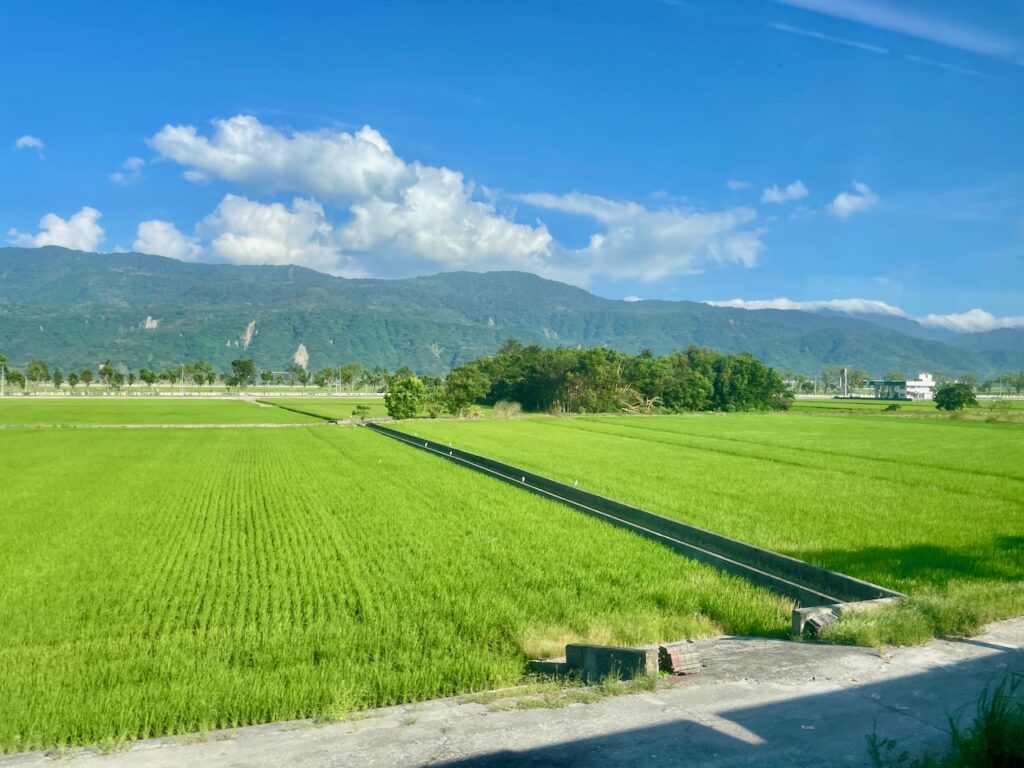
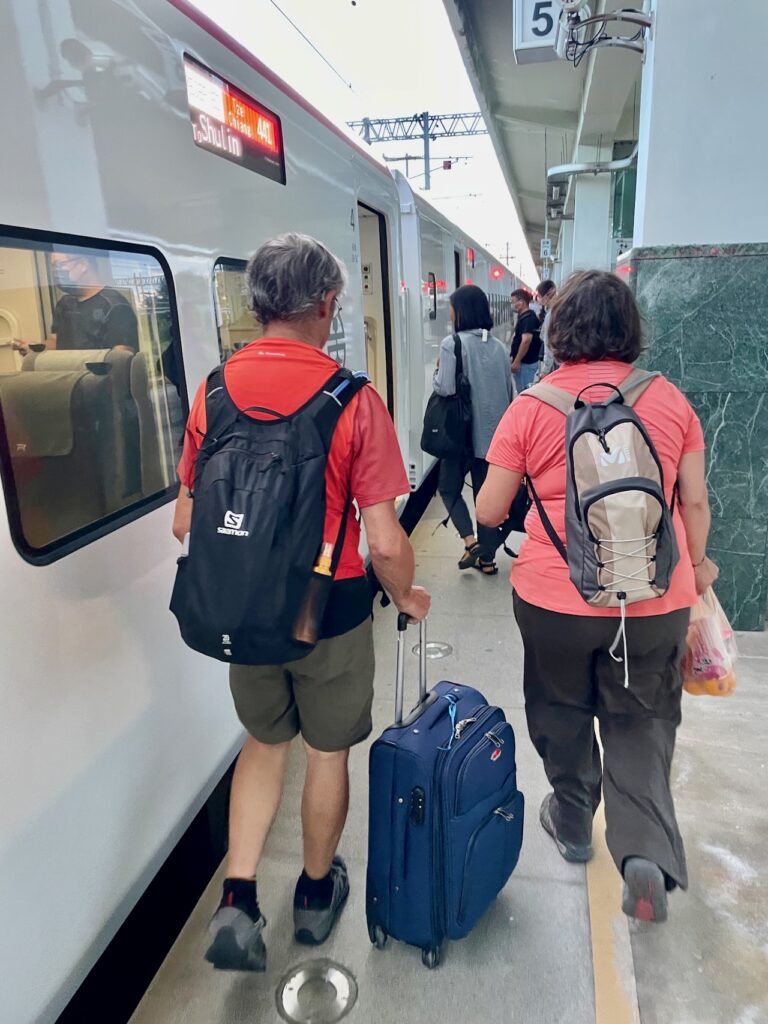
Hotel Check In
We stayed for two nights at the Taiwan Indigenous Cultural Resort. The Taiwan Indigenous Cultural Resort is a charming and culturally rich hotel. This resort has been meticulously renovated to offer guests a unique and immersive experience in indigenous Taiwanese culture. It features a breathtaking dining room where we enjoyed breakfast each morning. The rooms were exceptionally clean and comfortable. We were accommodated on the 5th floor, which happened to be the top floor of the hotel.
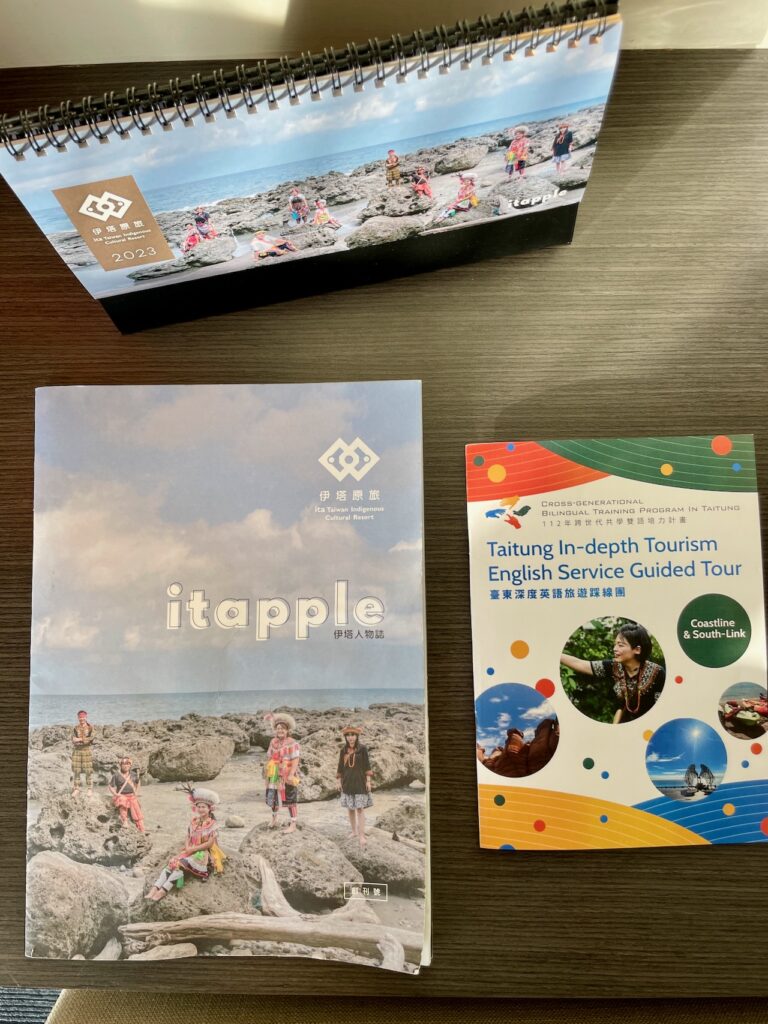
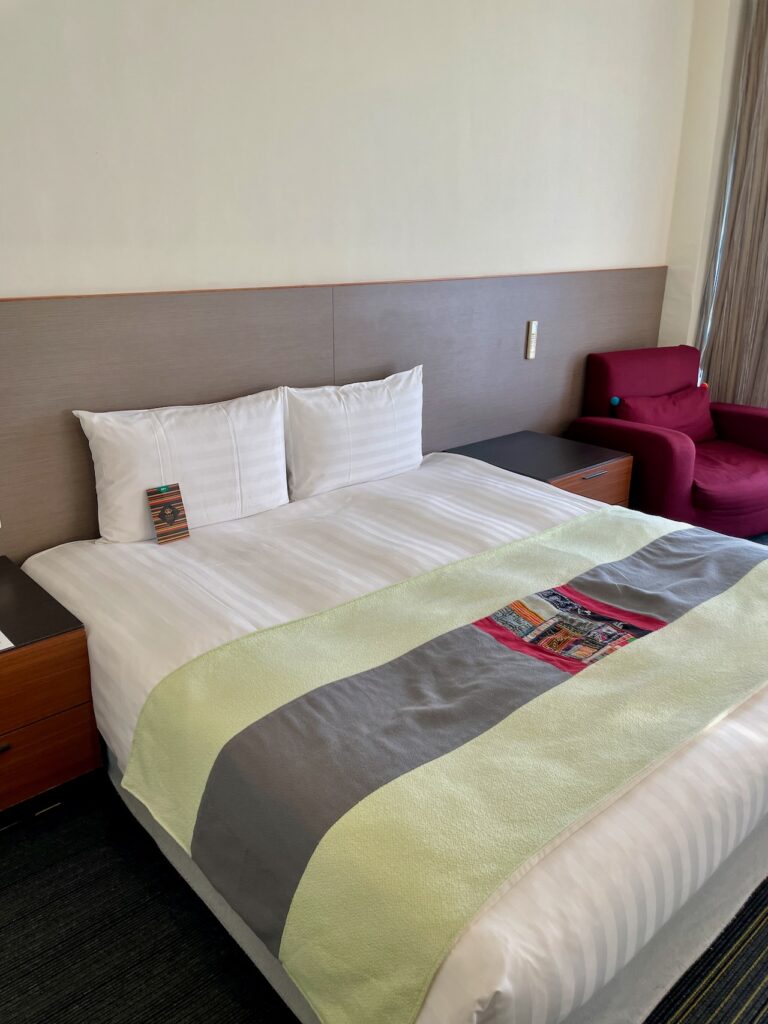
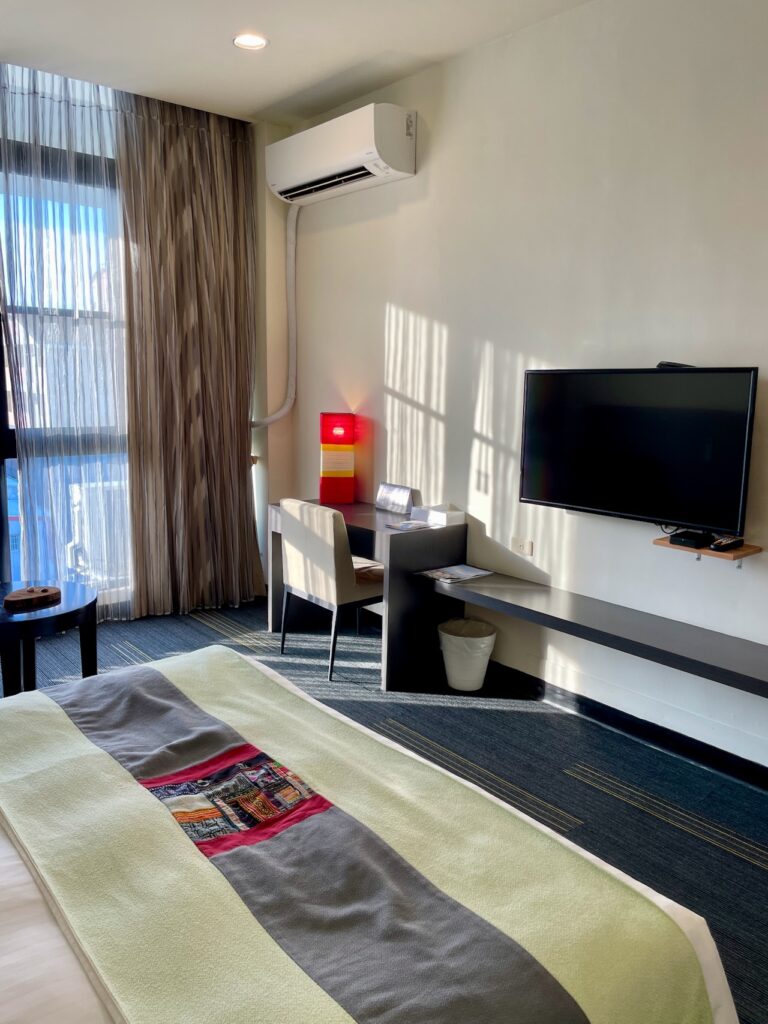
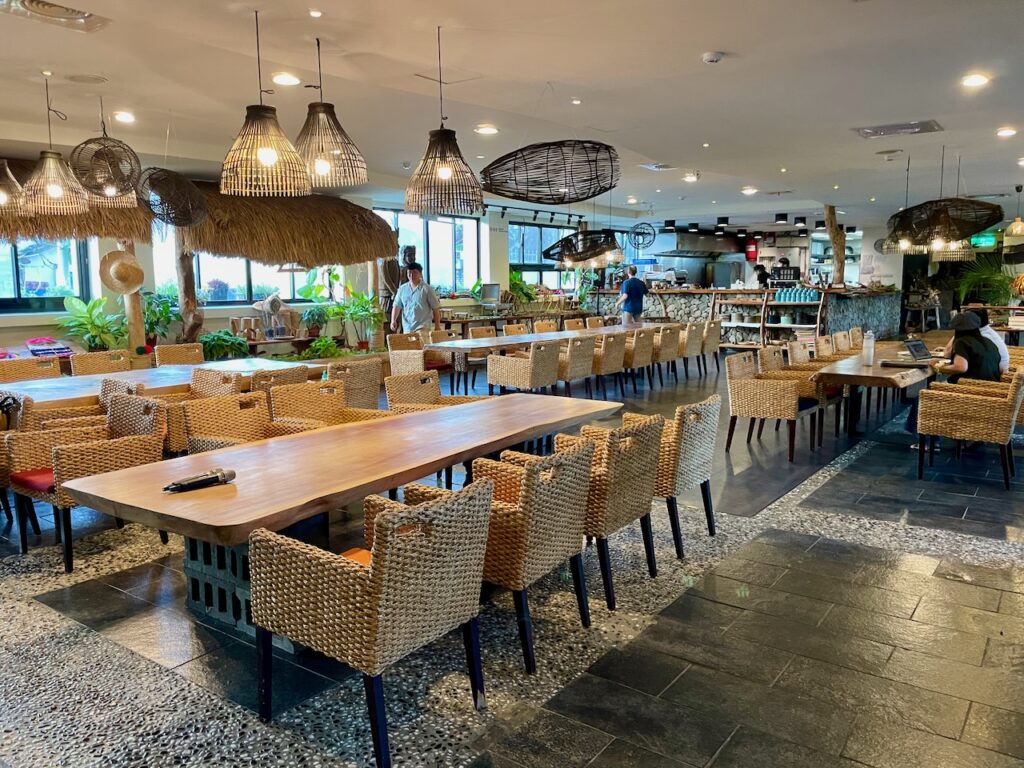
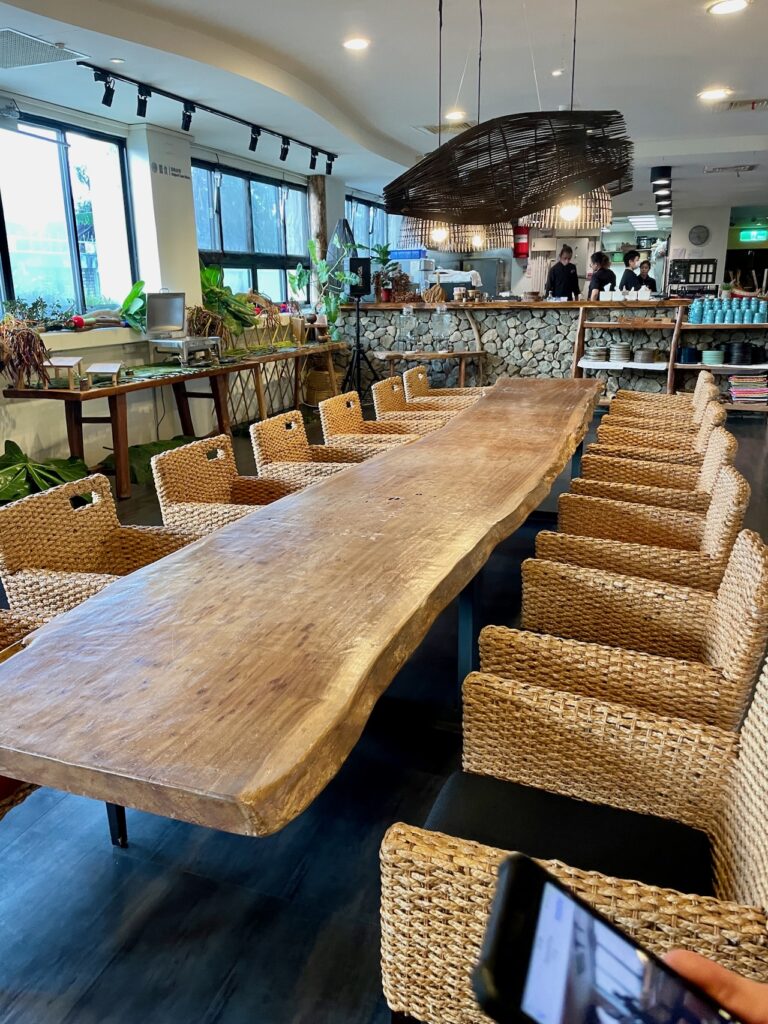
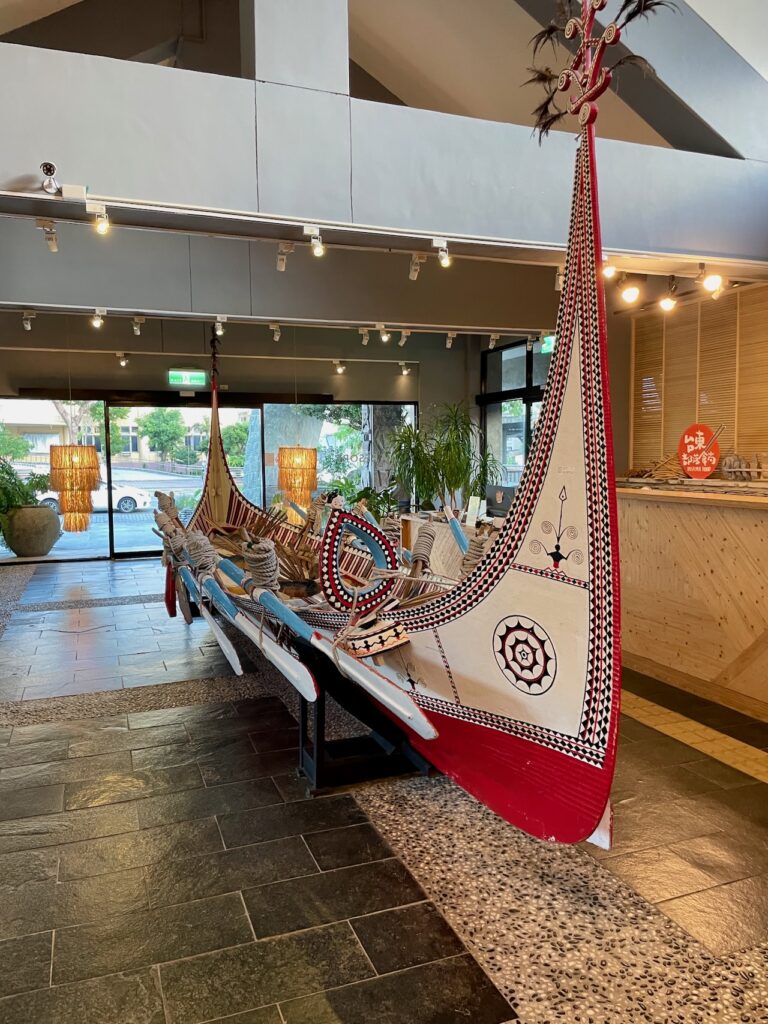
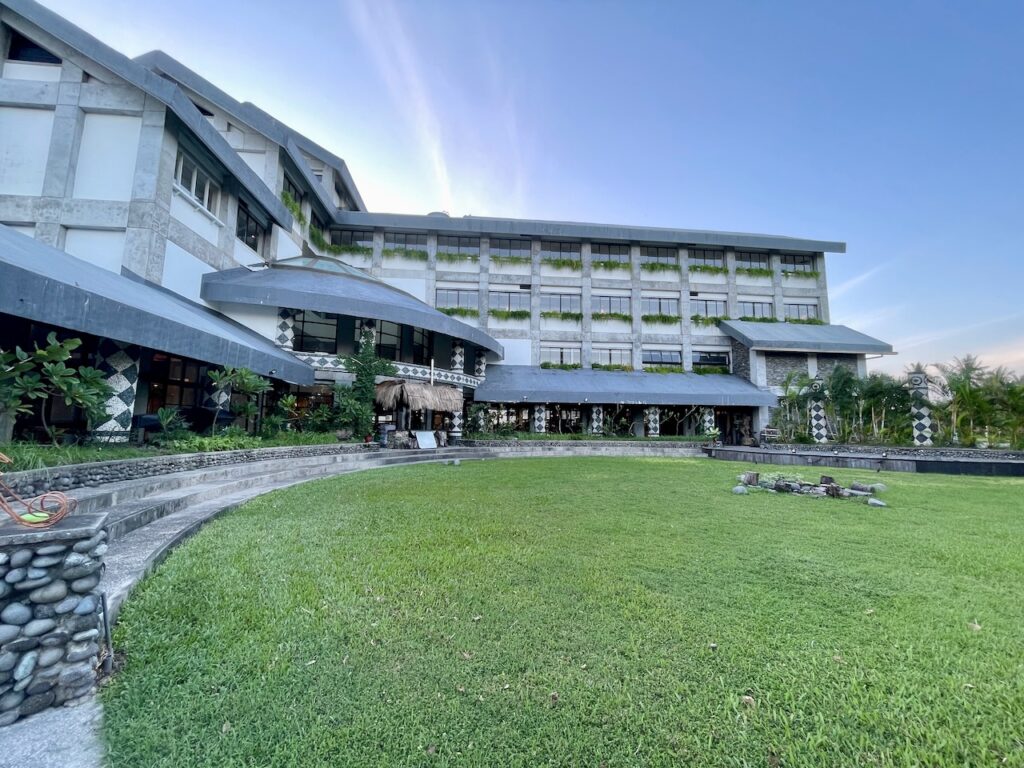
Taitung Forest Park
As we had a couple of hours left before dinner, we decided to visit the Taitung Forest Park, a tranquil and picturesque natural oasis located in the city. It serves as a peaceful retreat for both locals and visitors, offering a blend of lush greenery and recreational amenities such as walking trails, peaceful ponds and picnic areas. It was the perfect stroll before heading out for dinner.
Dinner
We received plenty of suggestions for our first dinner and decided to try Dong Ding restaurant, a beef noodle place that did not disappoint us! We ordered beef noodle soup, various types of tofu dishes, Taiwanese dumplings, and we were left feeling super full and satisfied!
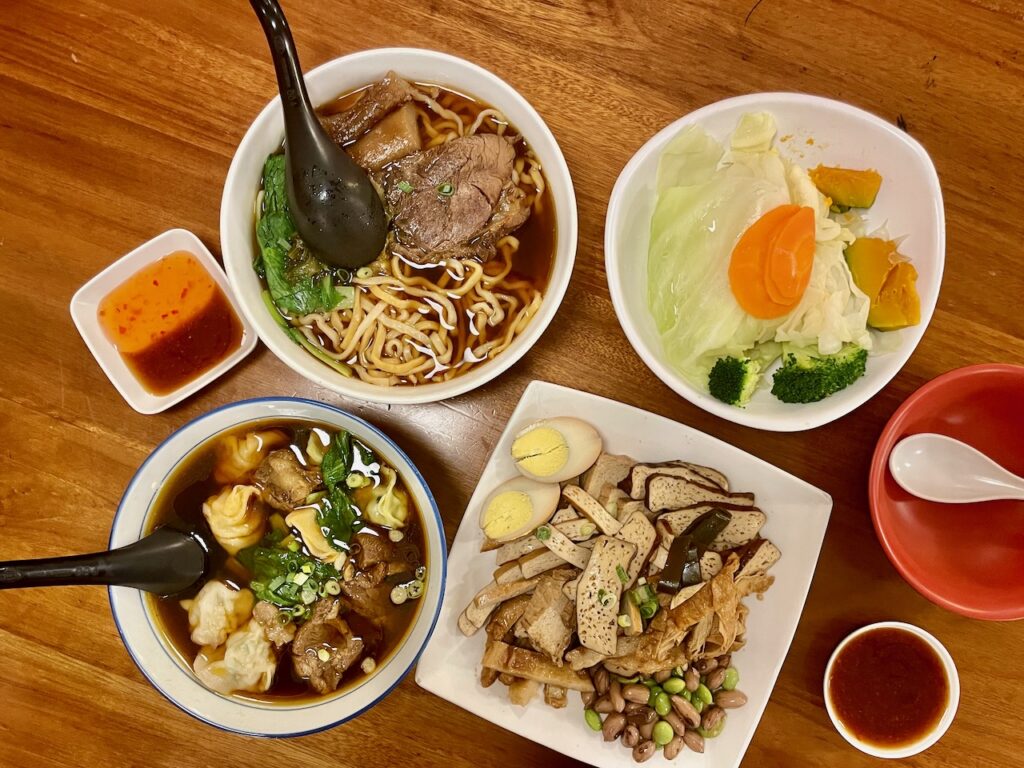
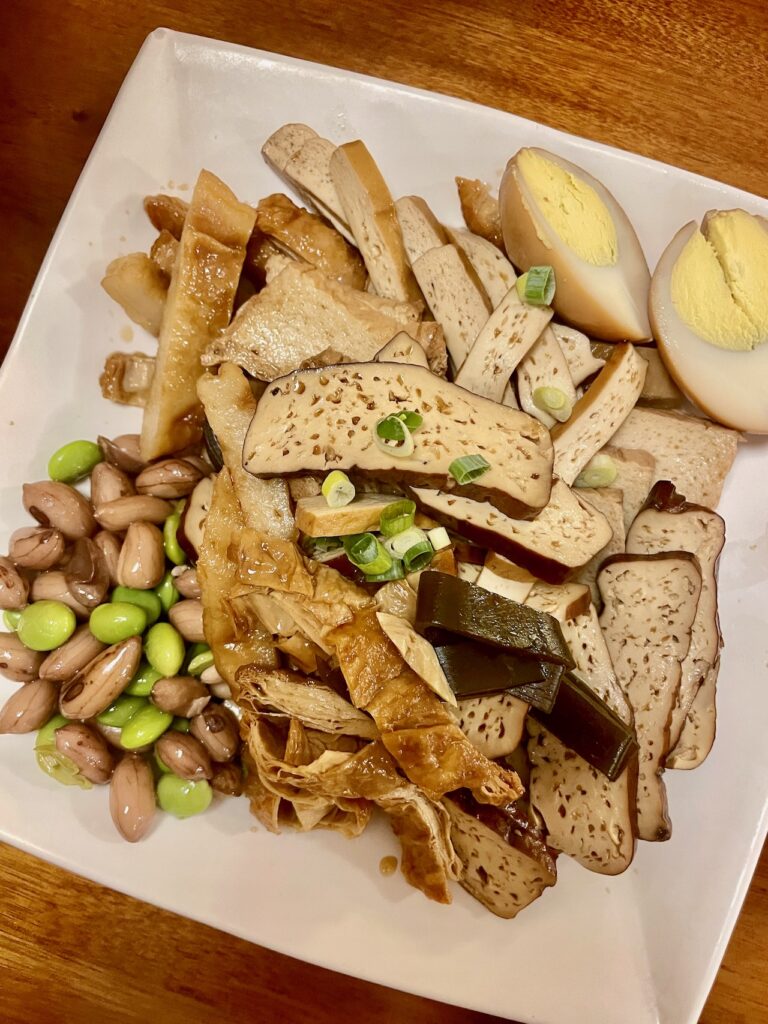
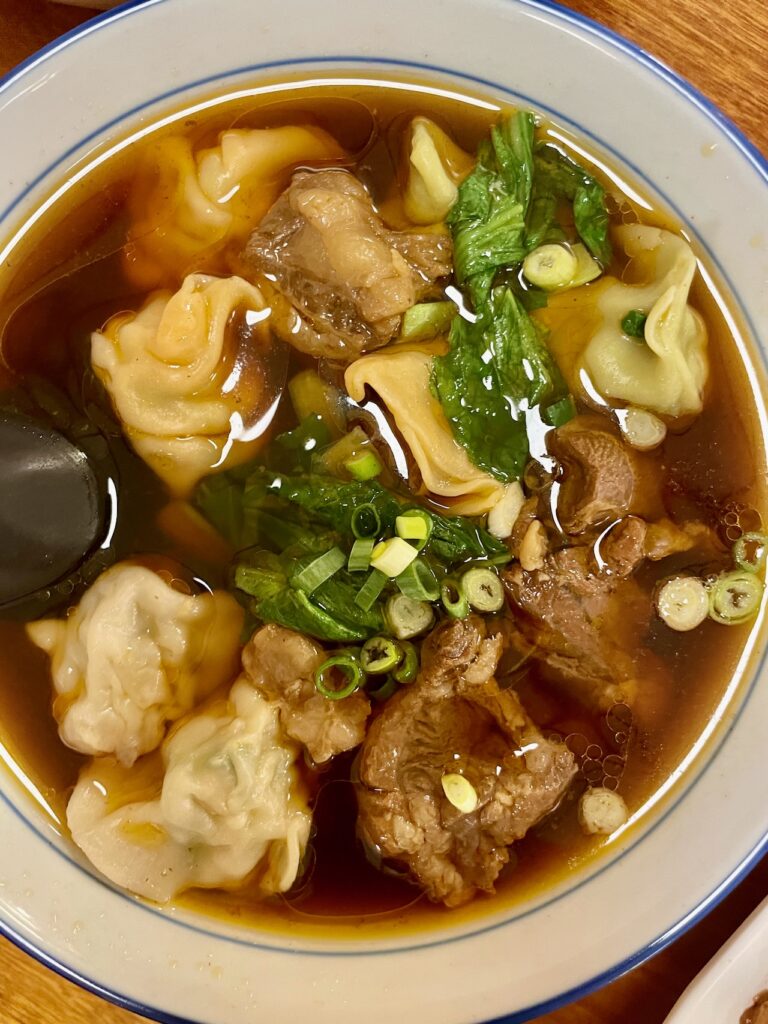
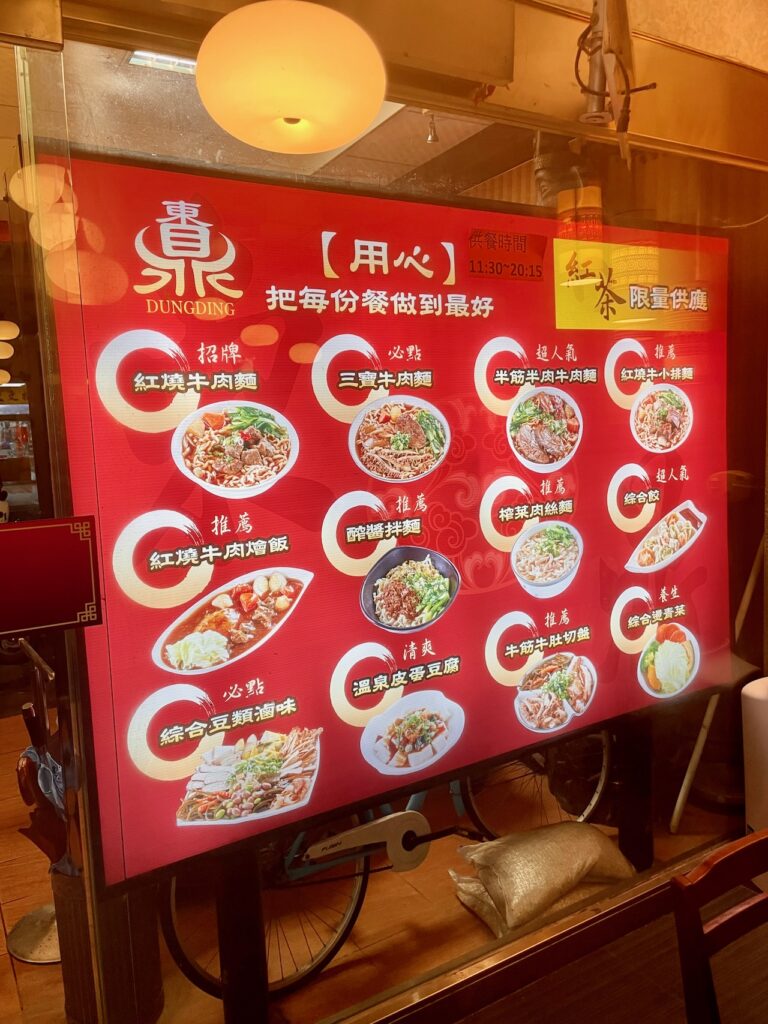
Day 1
Steven (another organizer on this trip) picked us up from our hotel after a wonderful breakfast.
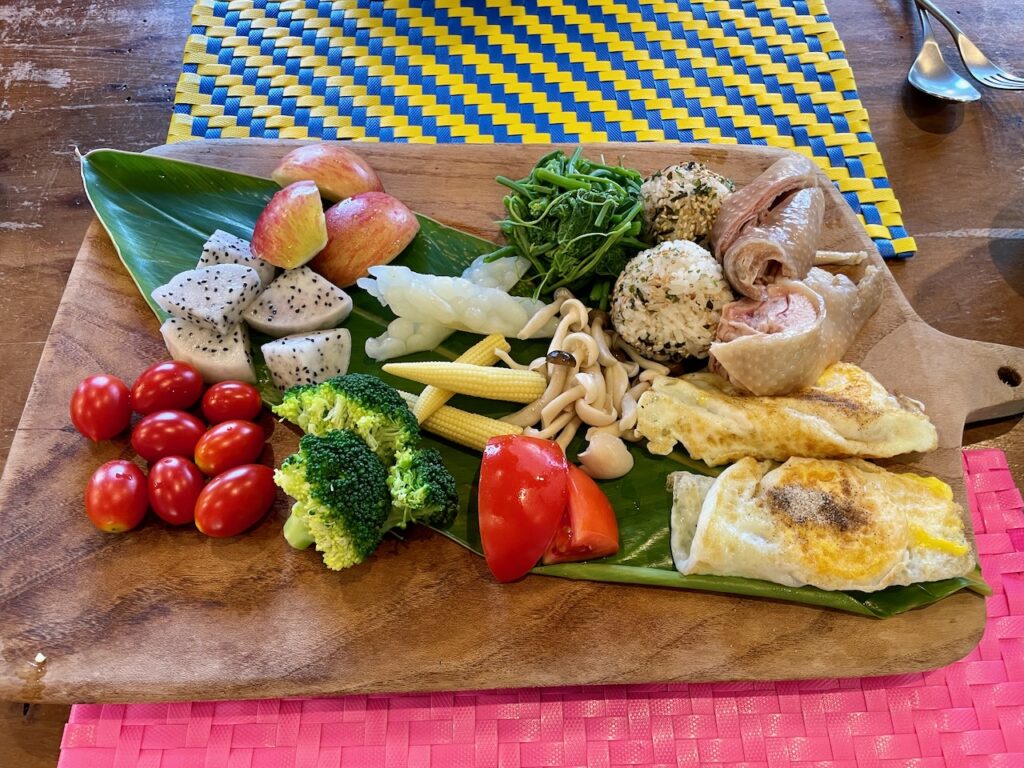
Stone Umbrella Kayaking Experience
Nestled just 10 kilometers north of Chenggong Township, hugging the coastline, this special place juts out about 1 kilometer into the sea, revealing its unique coastal erosion formations. Among these natural wonders, the “Stone Umbrella” is quite the celebrity, thanks to its uncanny resemblance to an actual umbrella. It’s not just a sight to behold; it also acts as a steadfast guardian, shielding the shoreline from the relentless waves of the open sea.
Our adventure began at the cozy Fudin cafe, where we got ready and met our kayaking instructor and the designated photographer.
(Note: In Taiwan, it’s a delightful tradition for instructors to wear multiple hats, often doubling as skilled photographers to ensure you capture every memorable moment.)
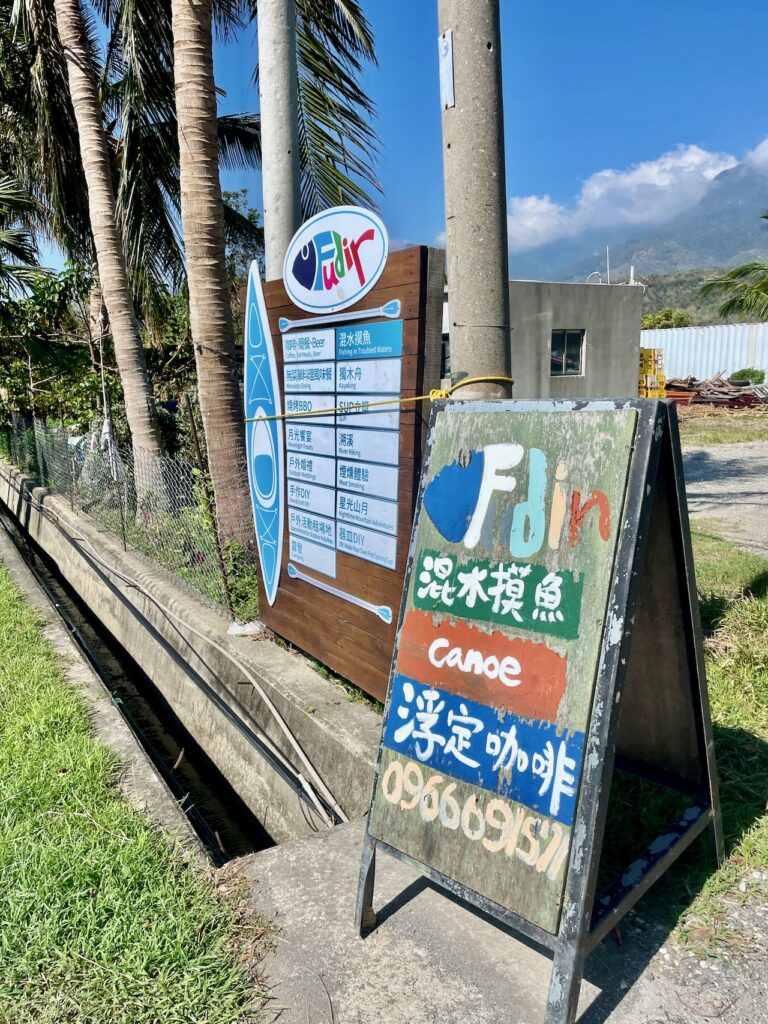
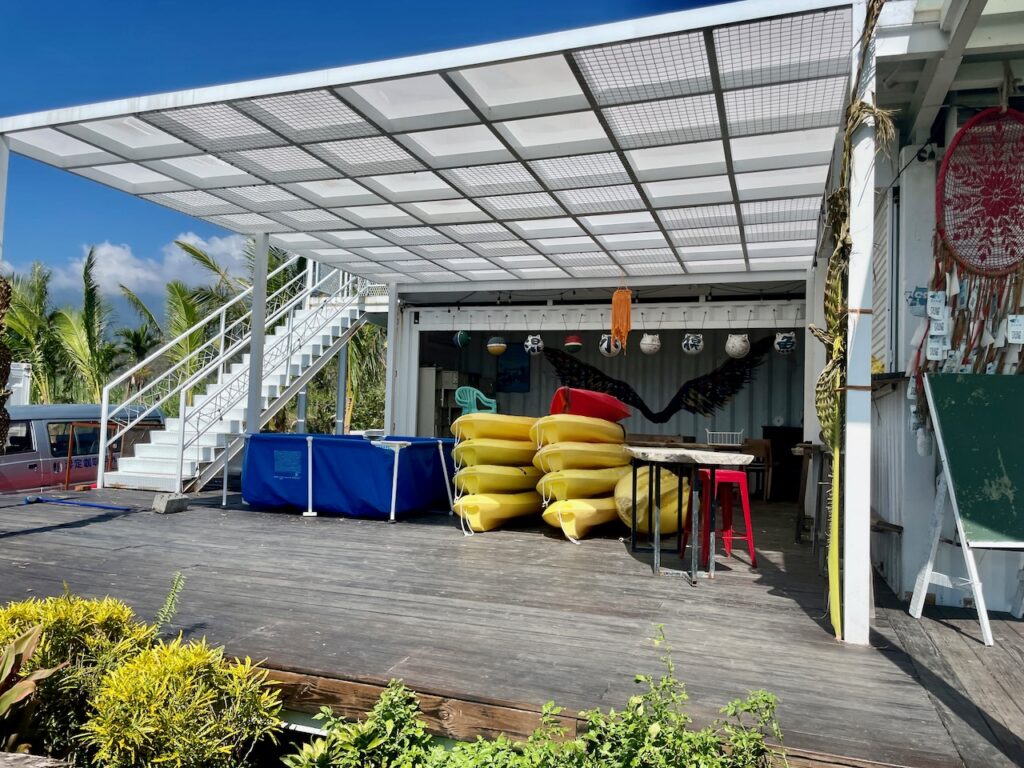
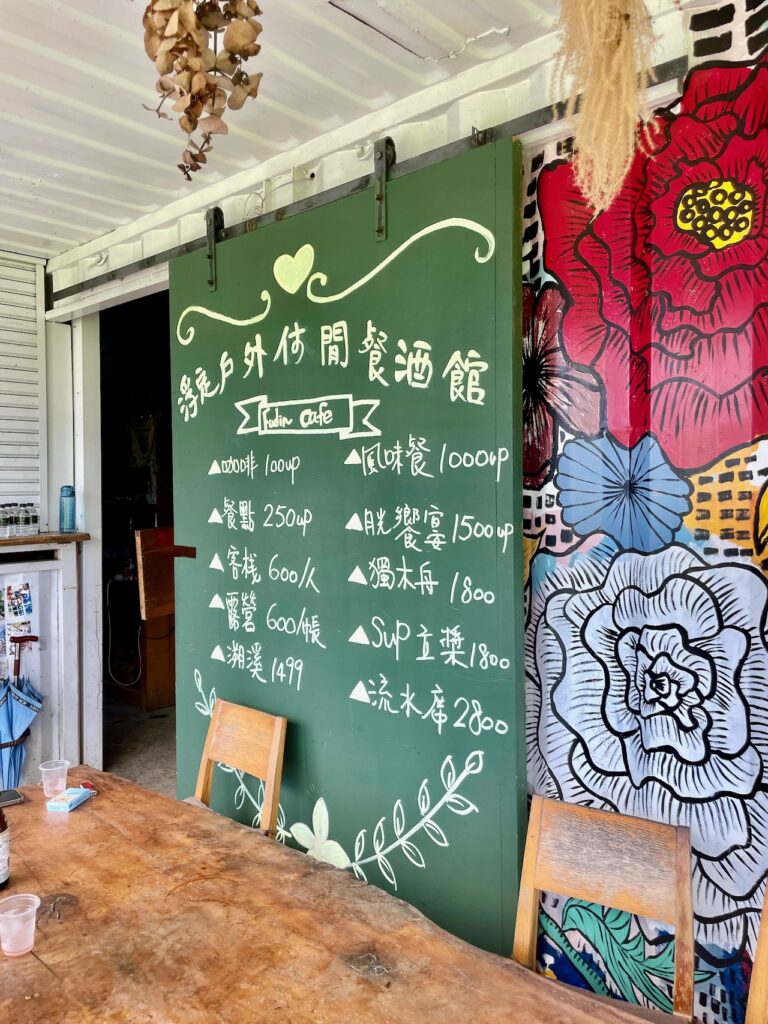
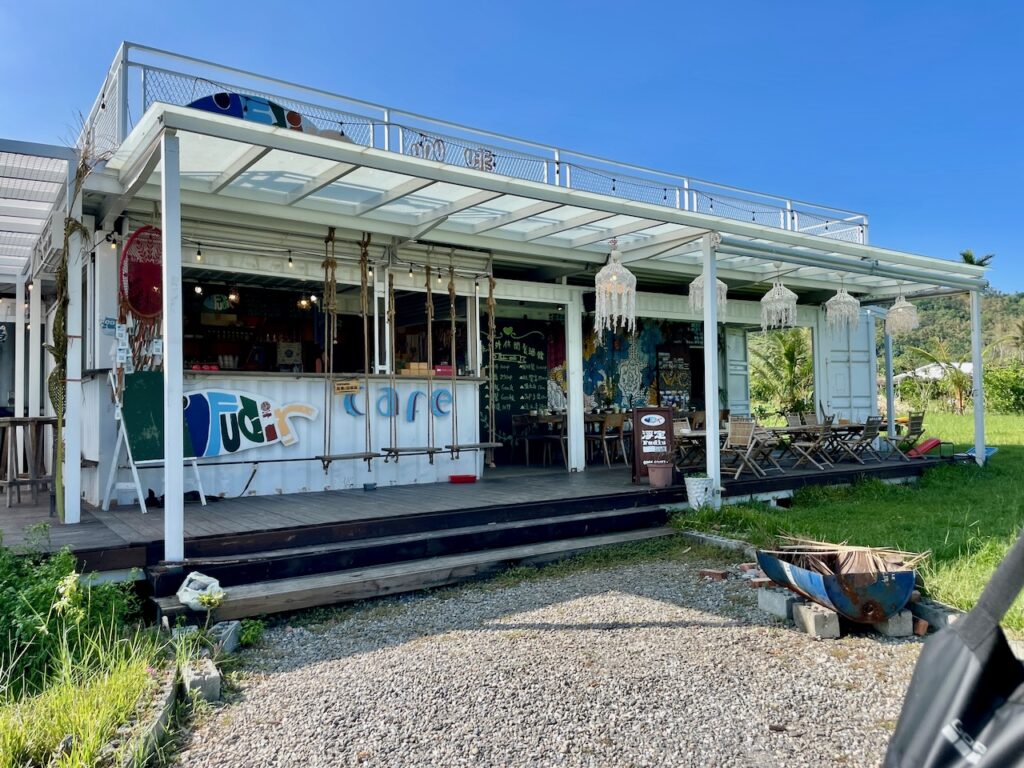
Our journey started with an exciting guided canoeing expedition. Our knowledgeable instructor led the way, letting us delve into the geological beauty of the Stone Umbrella. After a thorough safety briefing, we ventured into a narrow passage, seizing the chance to snap numerous photos while enjoying the serenity of the ocean.
Back on solid ground, we dived into a unique clay mask experience. Collecting clay from the nearby river, we meticulously blended and applied it to our faces, witnessing the impressive resourcefulness of the river. After our rejuvenating treatment, we freshened up before ascending the rock where the Stone Umbrella graced us with its presence. The view from above was breathtaking, and we couldn’t resist snapping more photos.
Our grand finale involved the exhilaration of cliff diving into the water. Though fear initially crept in, our reassuring instructor transformed the experience into an adrenaline rush, making it an unforgettable, highly enjoyable escapade.
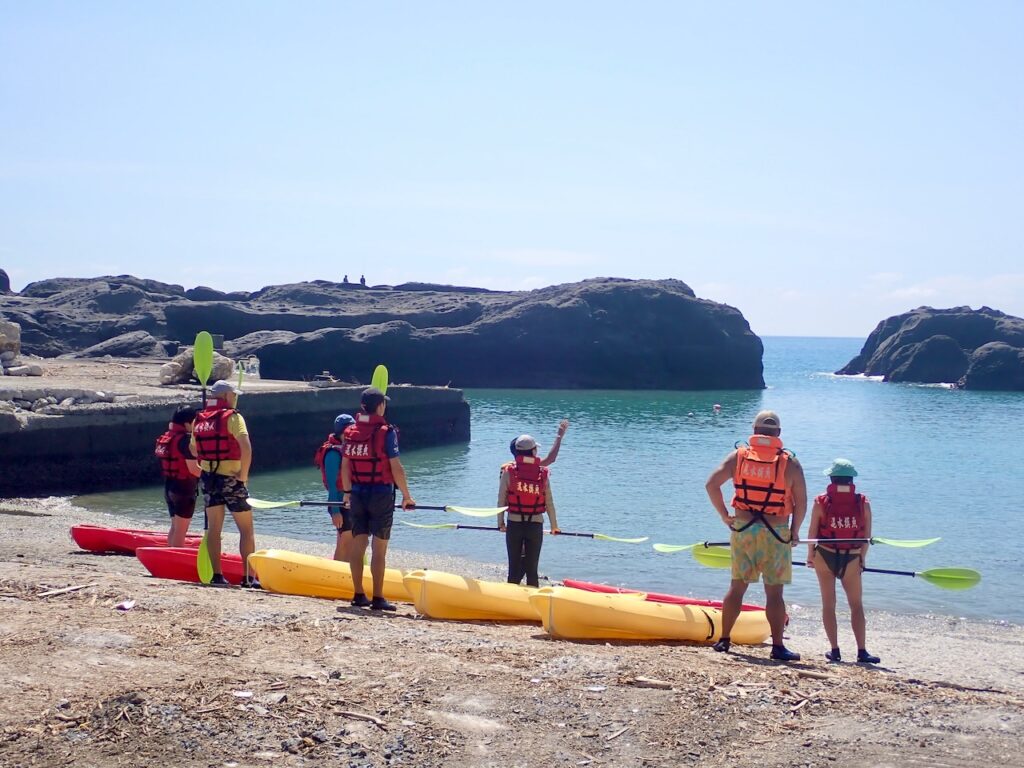
Amis Cuisine at Fudin cafe
Following our morning kayaking escapade, we returned to the Fudin Cafe to refuel and savor the Amis tribe’s delectable cuisine. The food not only delighted our taste buds but also impressed us with its artful presentation. Our standout favorite was the sea snails, a culinary experience quite distinct from the classic French “escargots” I was accustomed to.
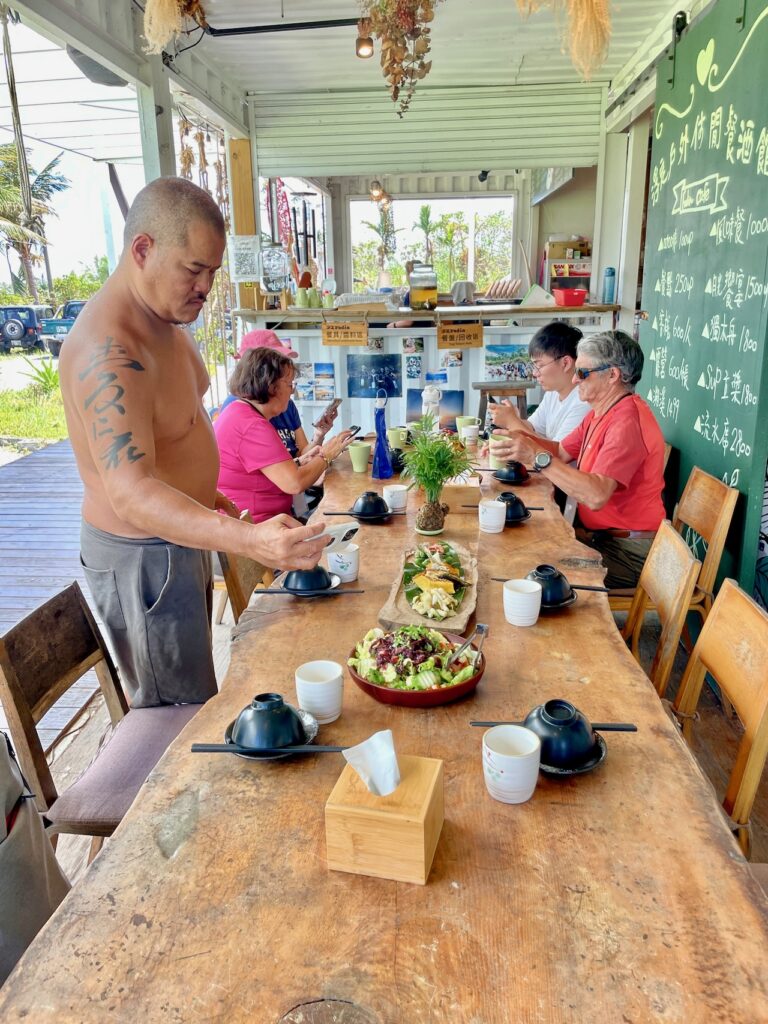
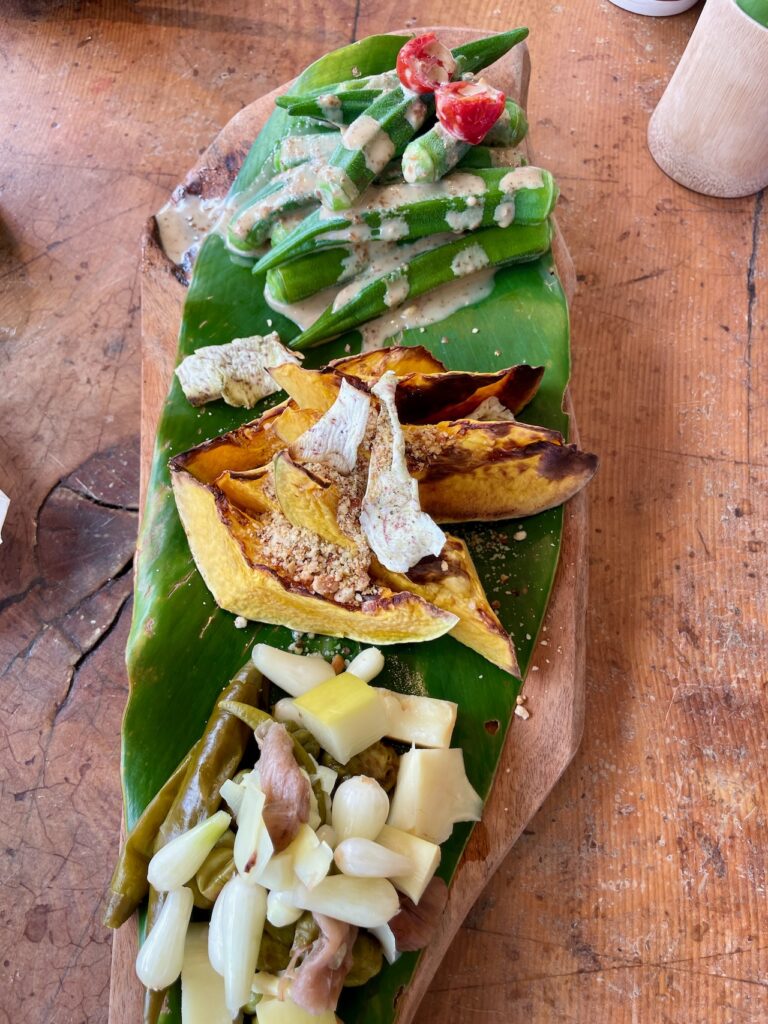
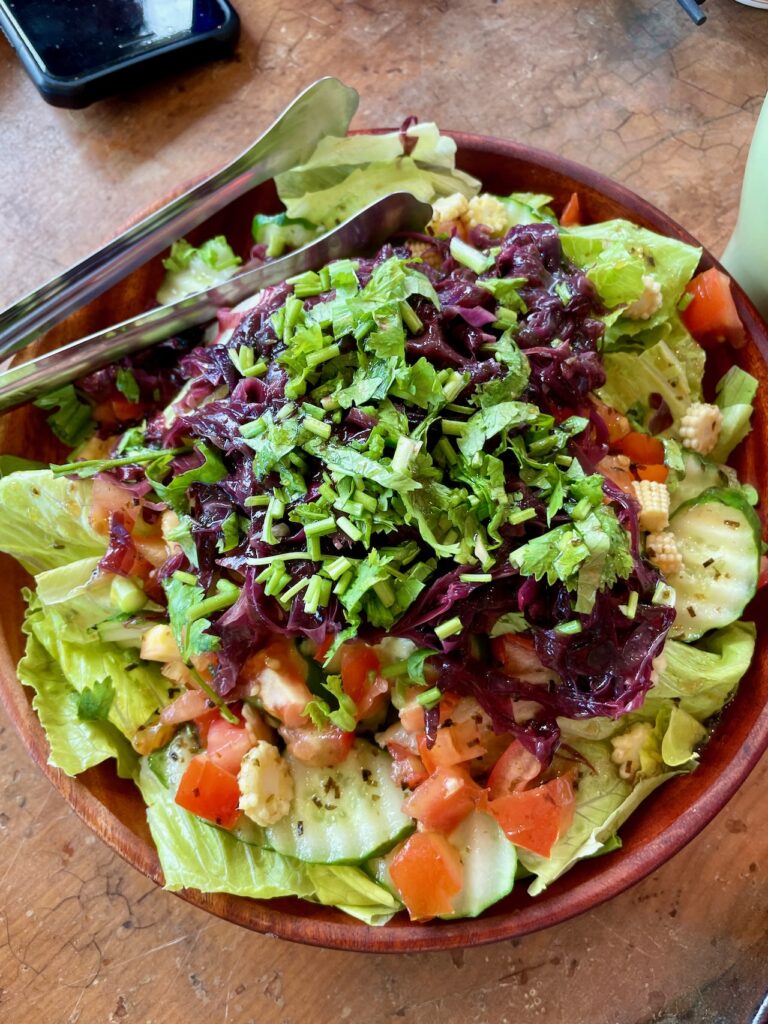
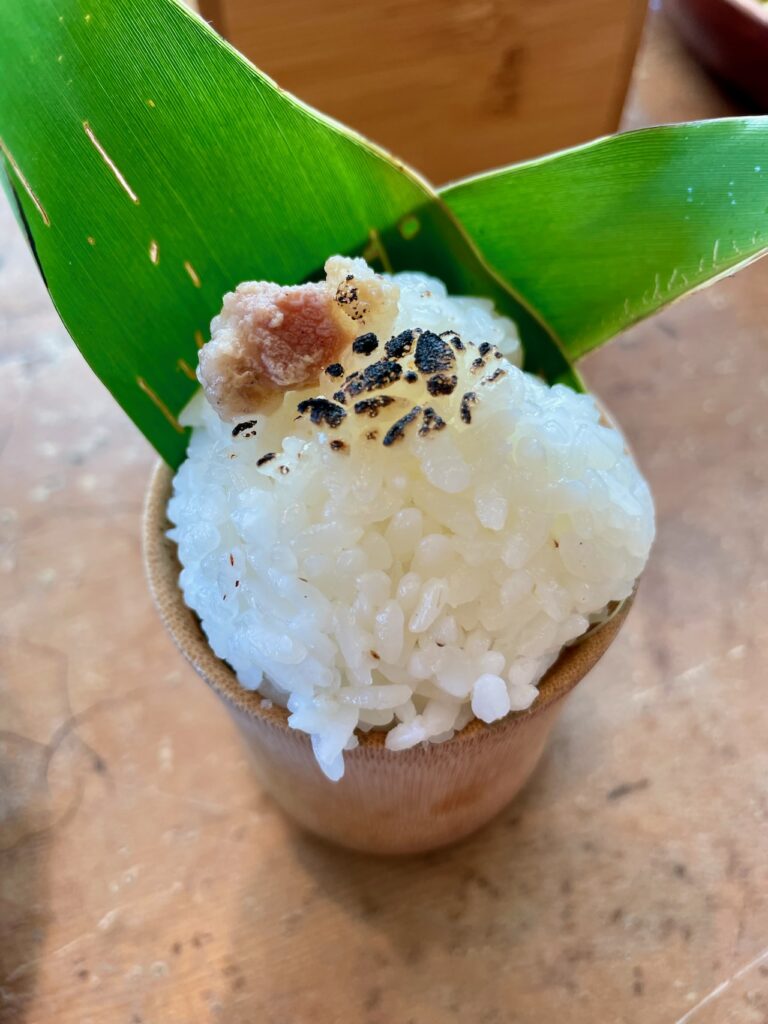
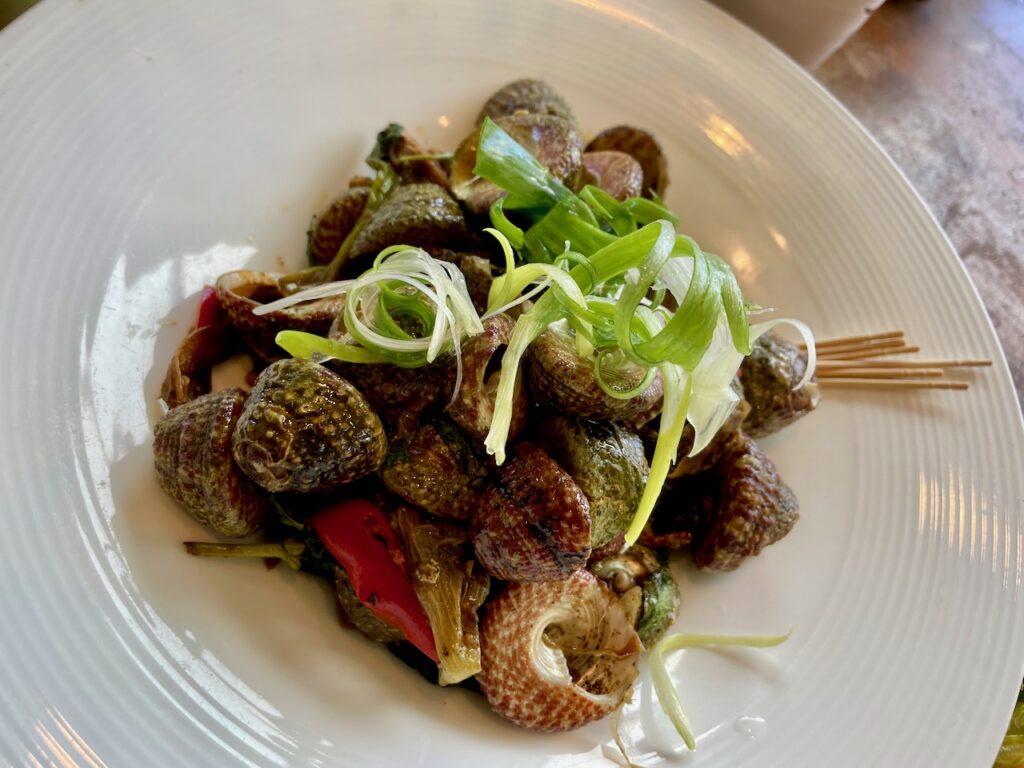
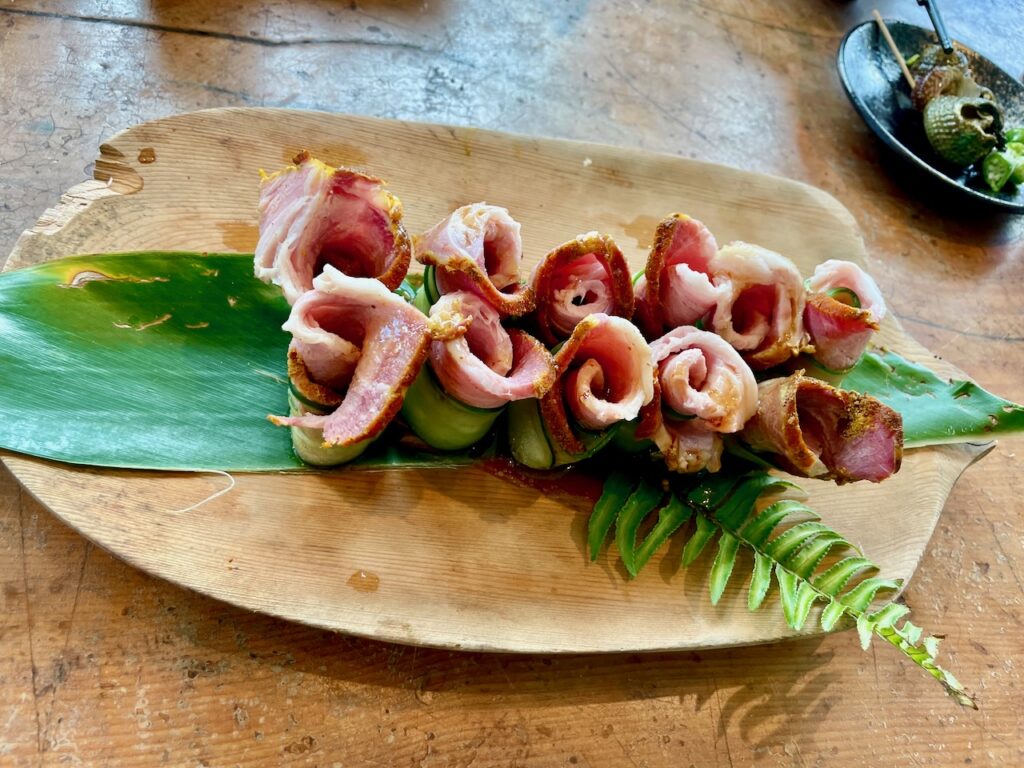
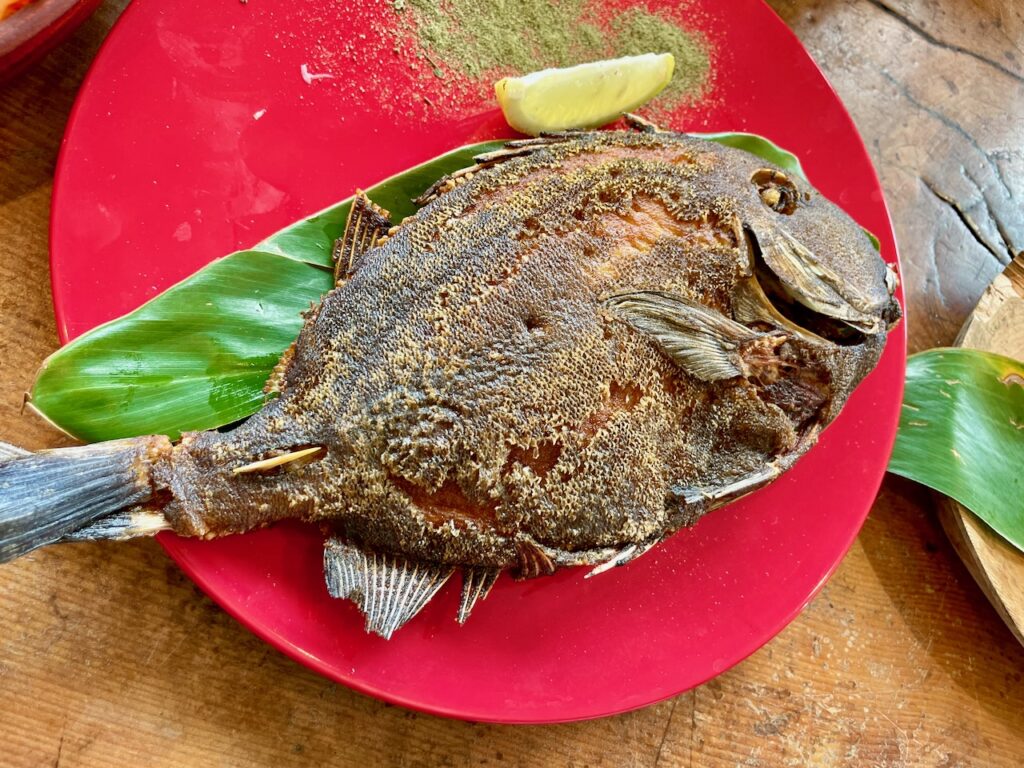
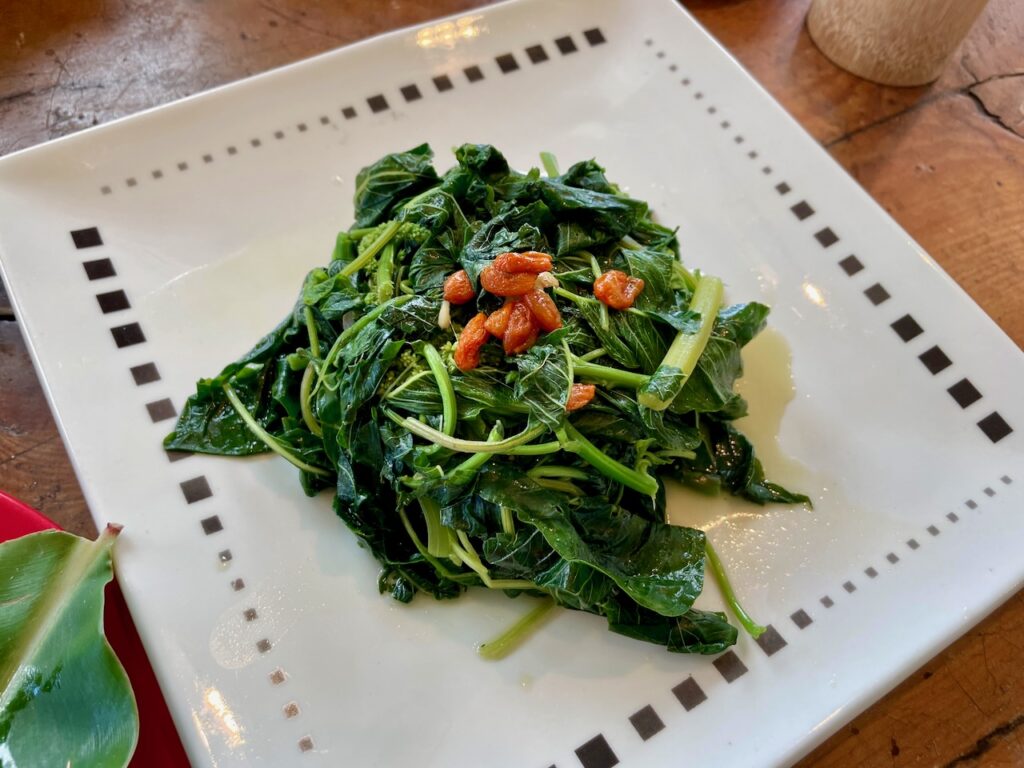
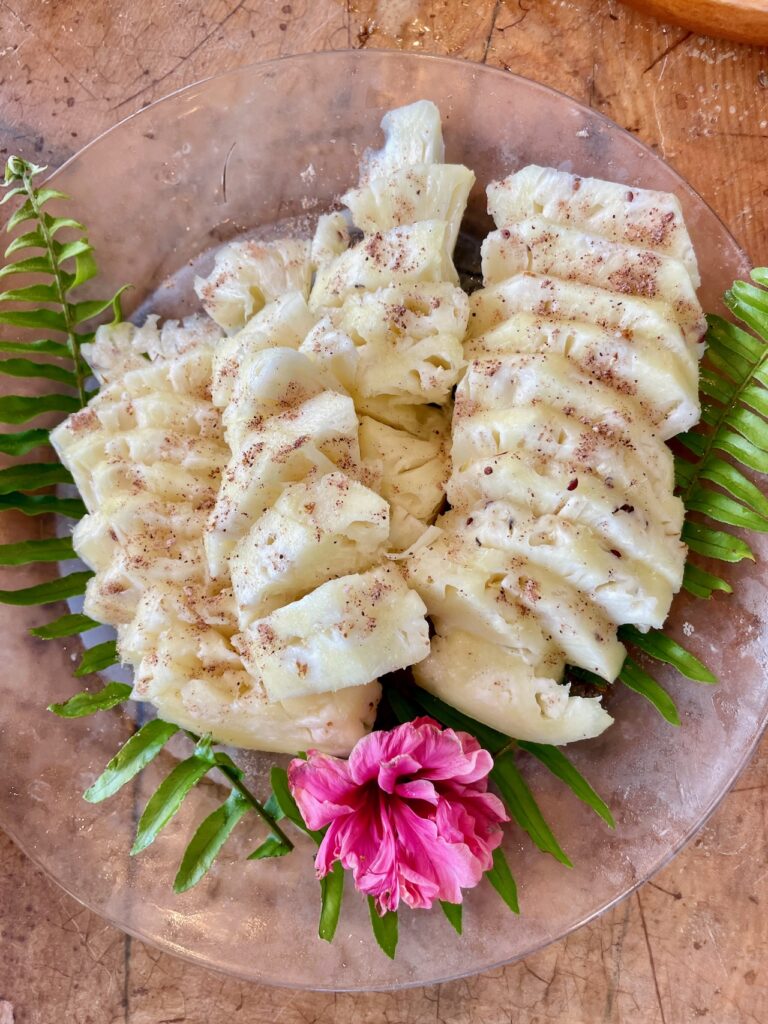
Fugang geological park
Situated near the southern tip of the East Coast National Scenic Area, at the 159-kilometer mark, we discover the remarkable Fugang Geological park. This geopark boasts a diverse range of captivating rock formations. In a stark contrast to the rest of the Philippine Plate that shapes the geology of this region, Fudging Geopark is predominantly composed of sandstone, leaving geologists intrigued about its origins.
During our visit, we had the pleasure of meeting a delightful volunteer who brimmed with enthusiasm and in-depth knowledge about the various geological marvels on display. As we marveled at rock formations resembling animals, we also had the rare opportunity to witness a fascinating phenomenon: inverted plates. Typically, this phenomenon is found in the Himalayas, but Fudging Geopark offers researchers a more accessible site to observe this natural wonder.
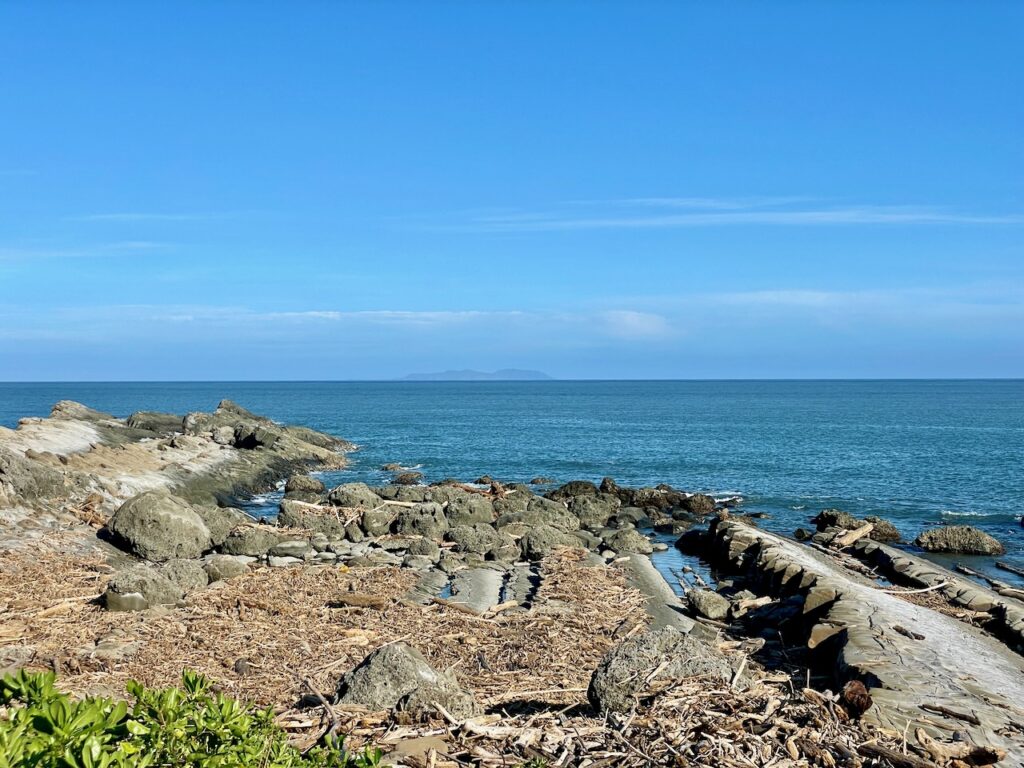
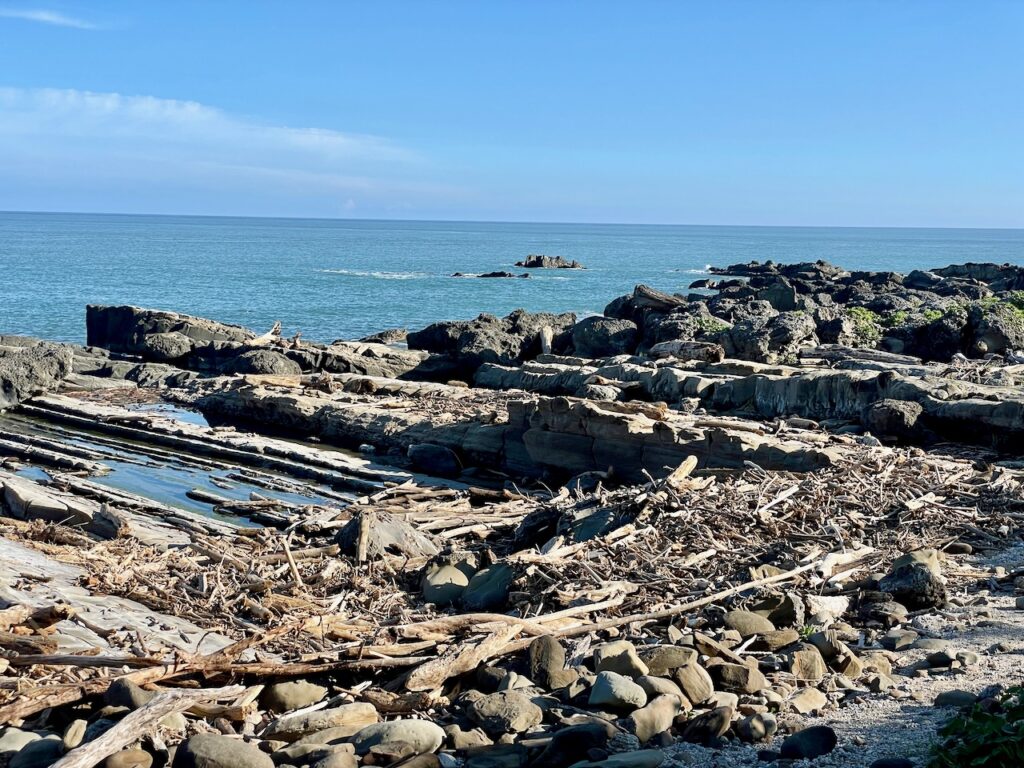
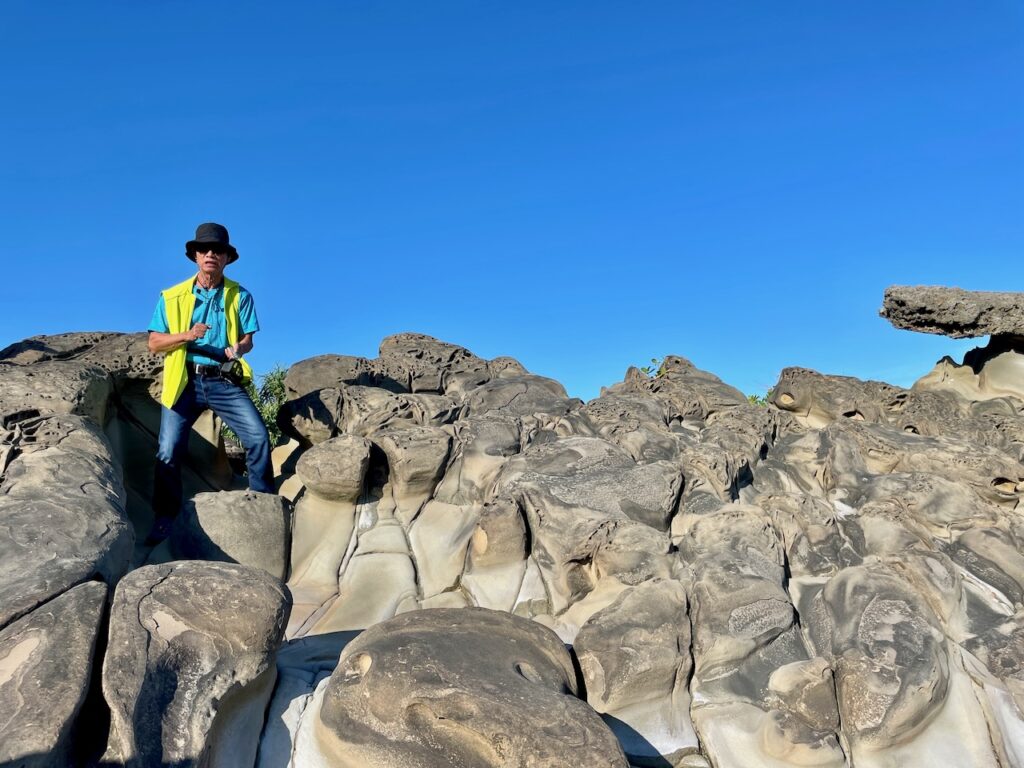
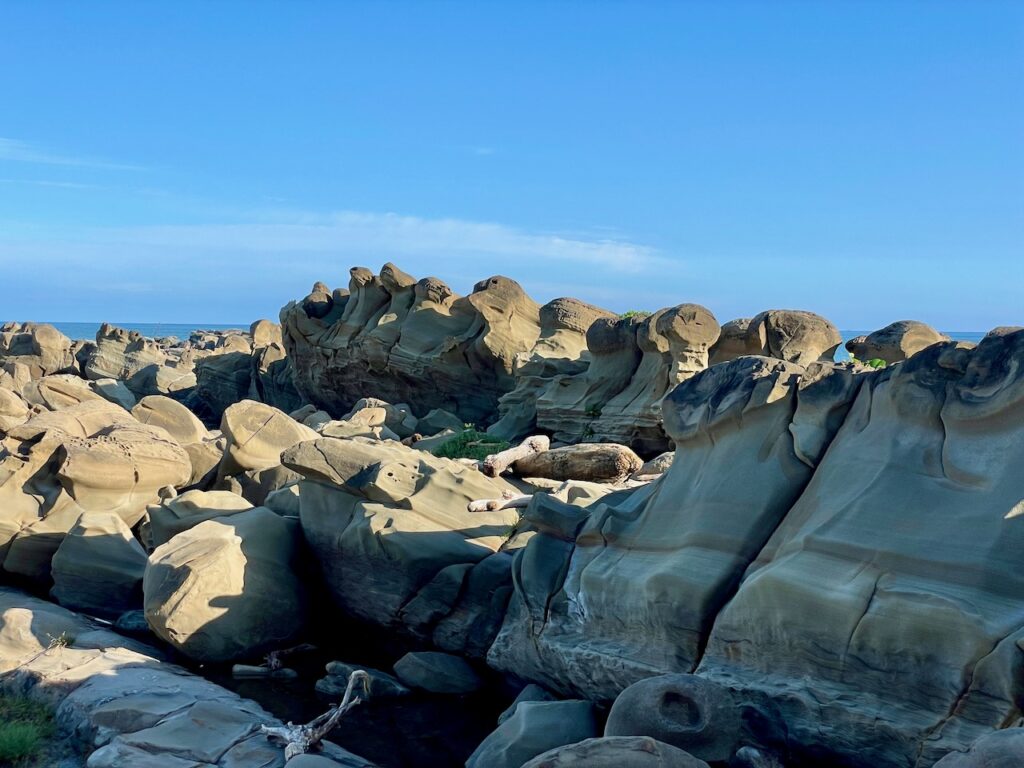
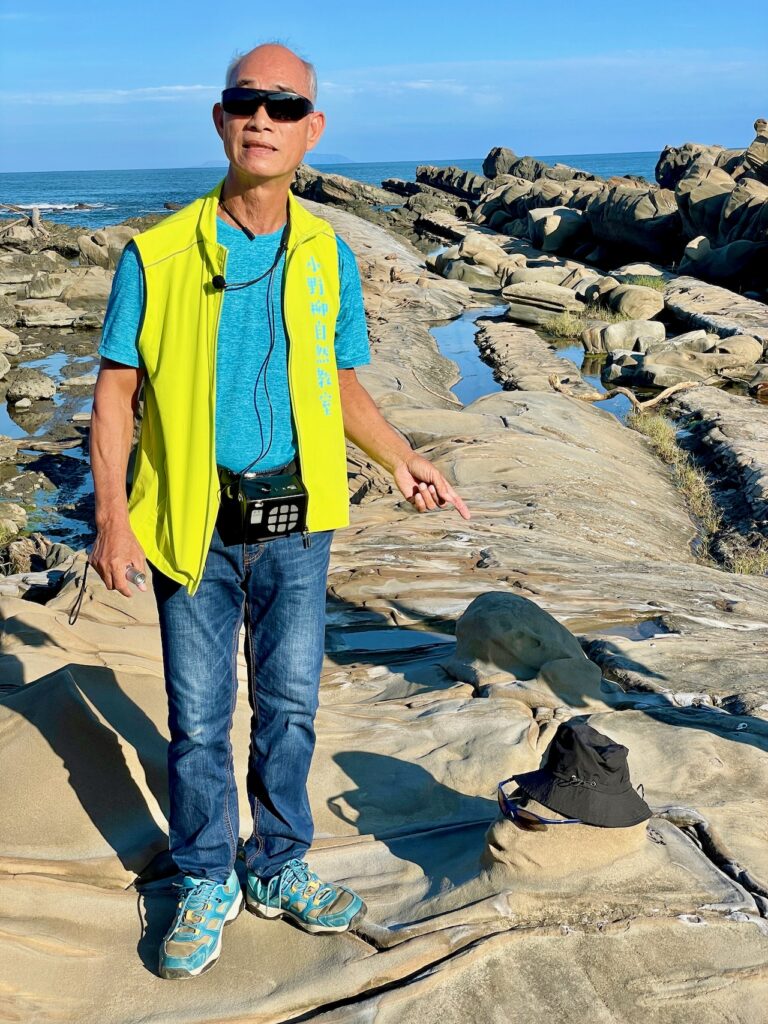
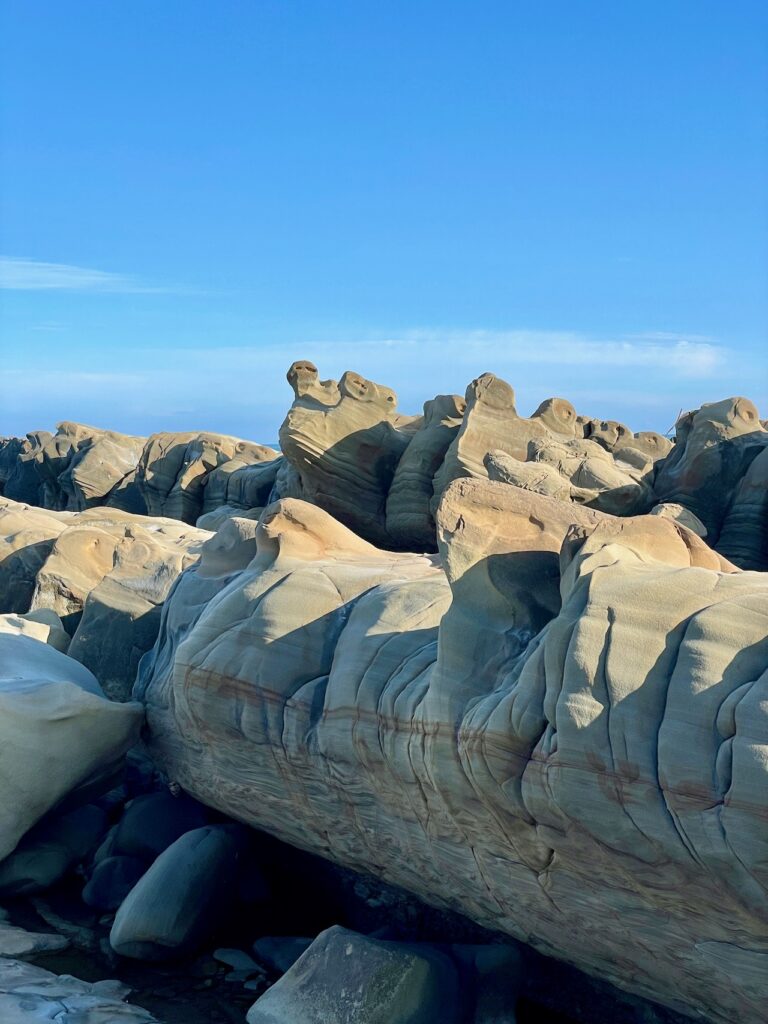
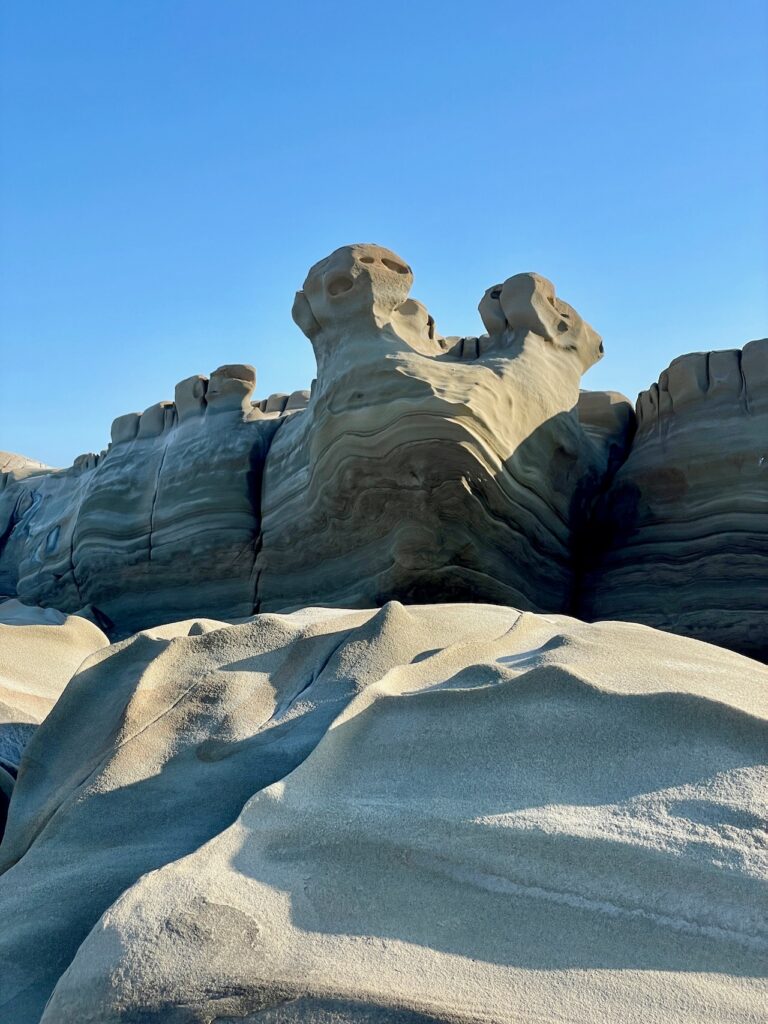
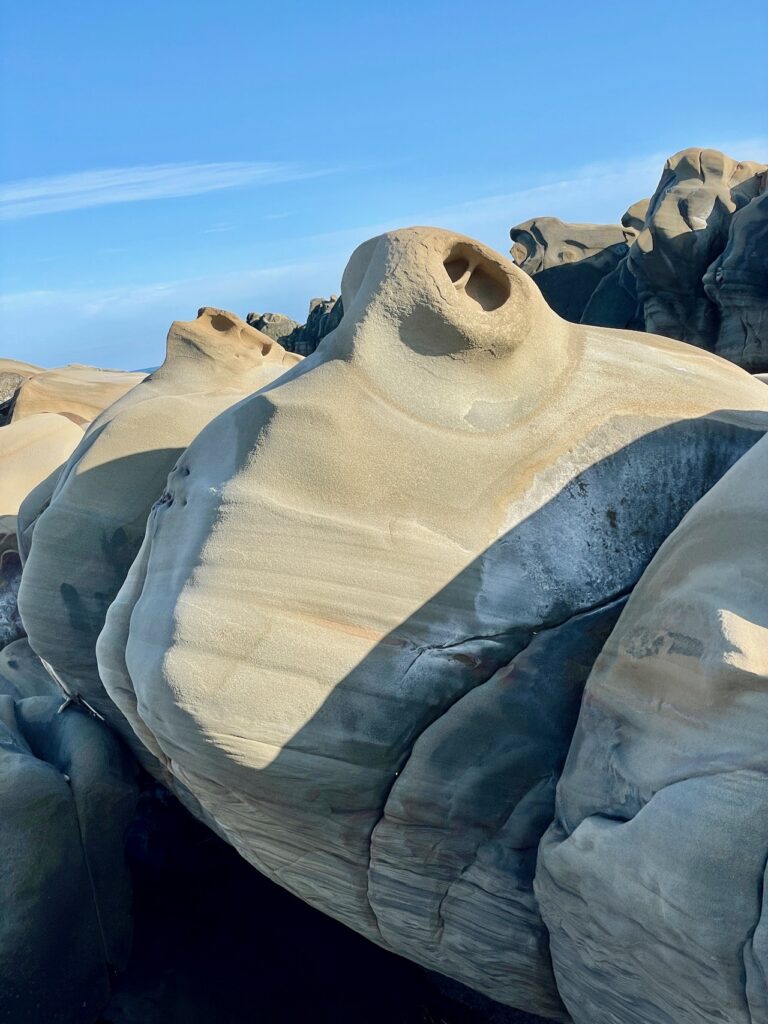
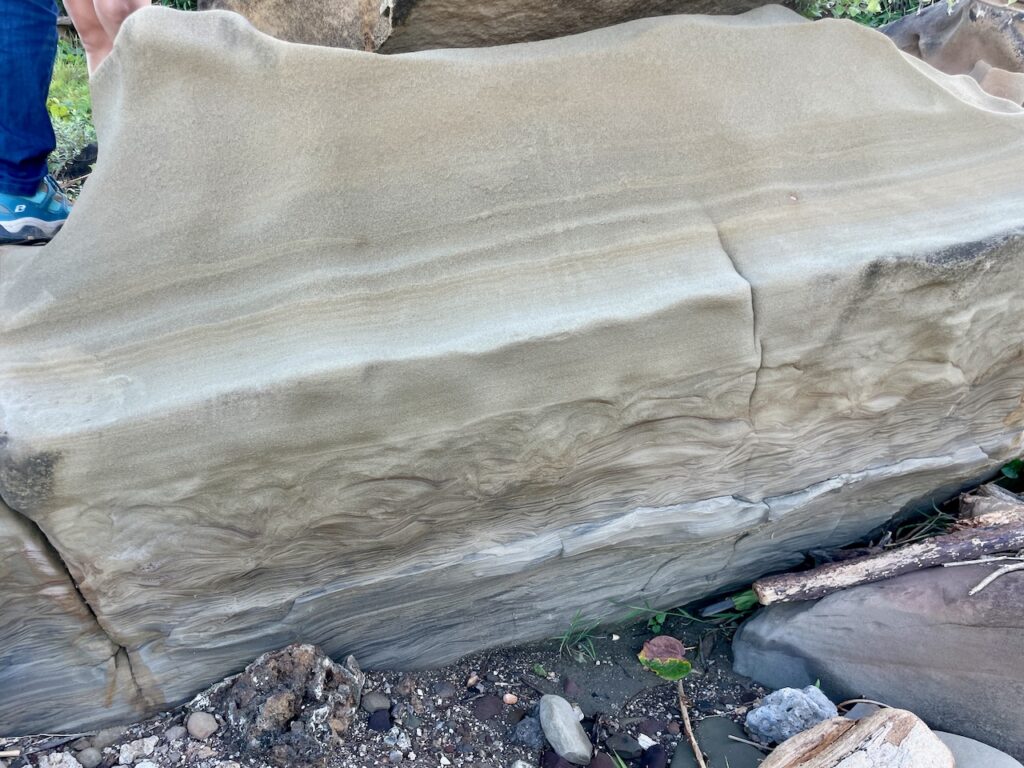
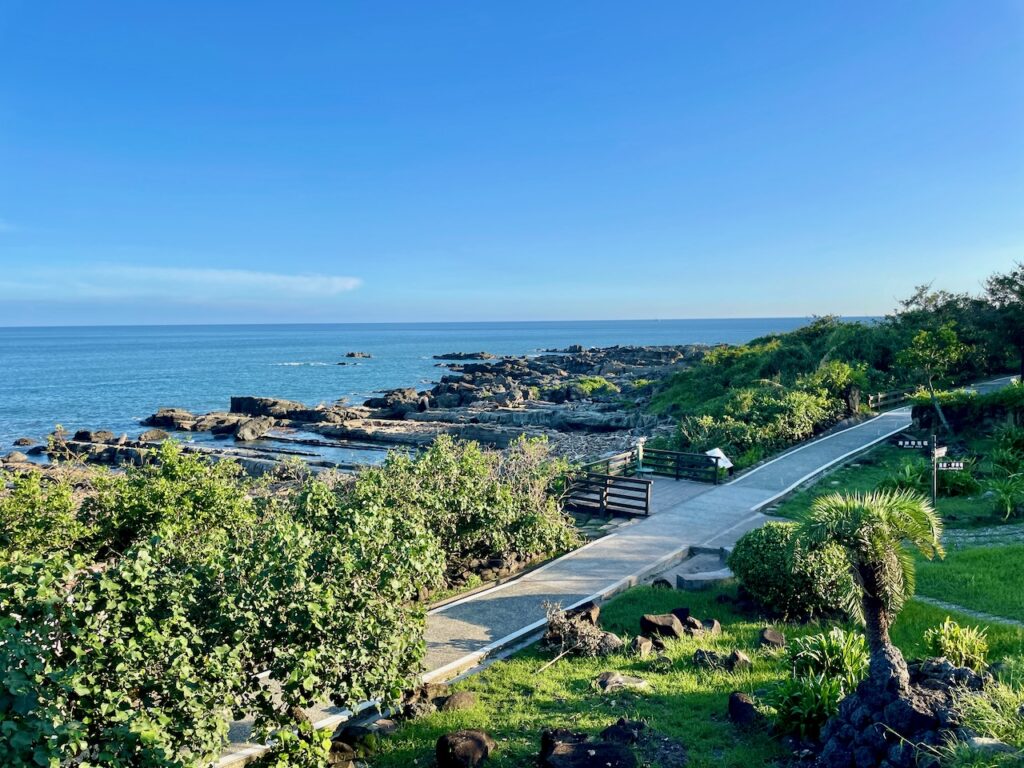
Dinner at Seven Quinoas
After our exploration, we made our way back to the hotel for a refreshing shower and a change of clothes, much-deserved after our adventures. Our appetites led us to the Seven Quinoa restaurant for dinner. I relished their Three Cups Lion’s Mane Mushroom set, while Mrs. NN opted for the sauce-braised Mahi Mahi fish. Both dishes were a delightful culinary experience and were very fresh. To top it off, we indulged in a Taiwanese dessert we’d never tried before – the Red Quinoa Guilinggao (Turtle Jelly).
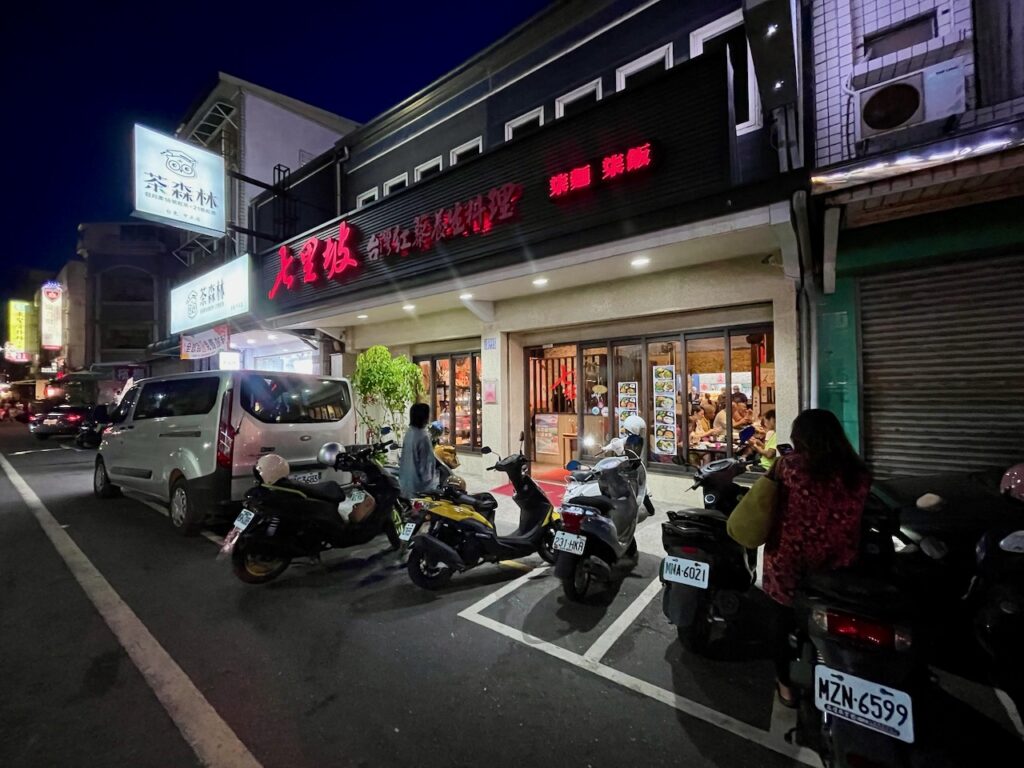
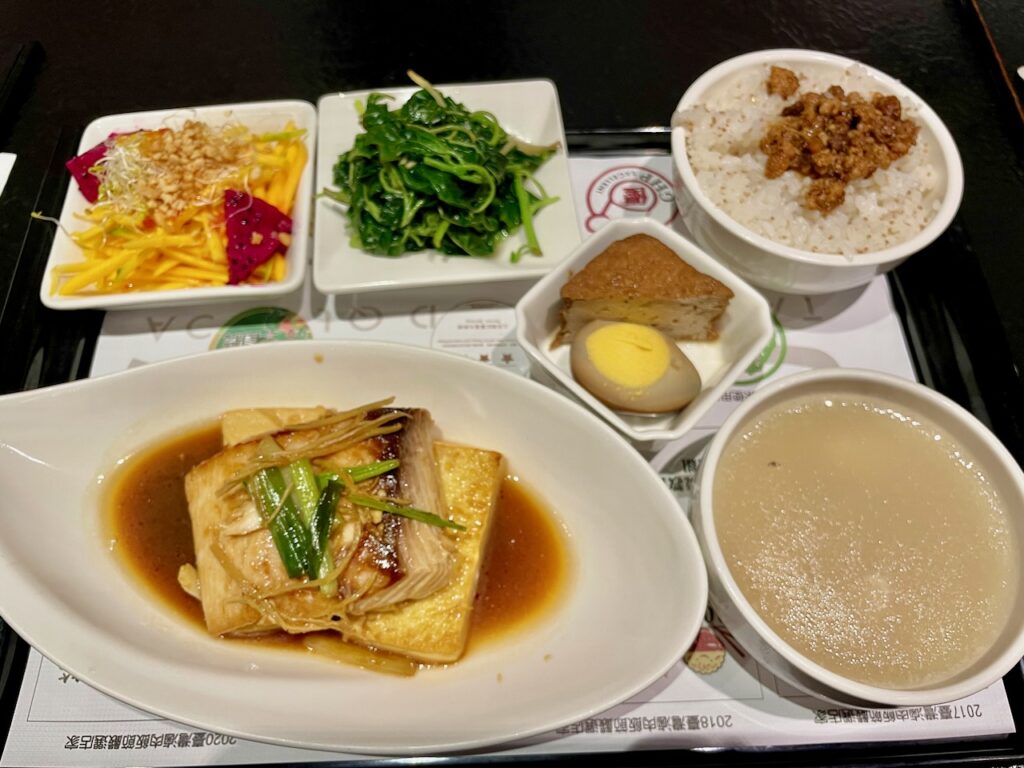
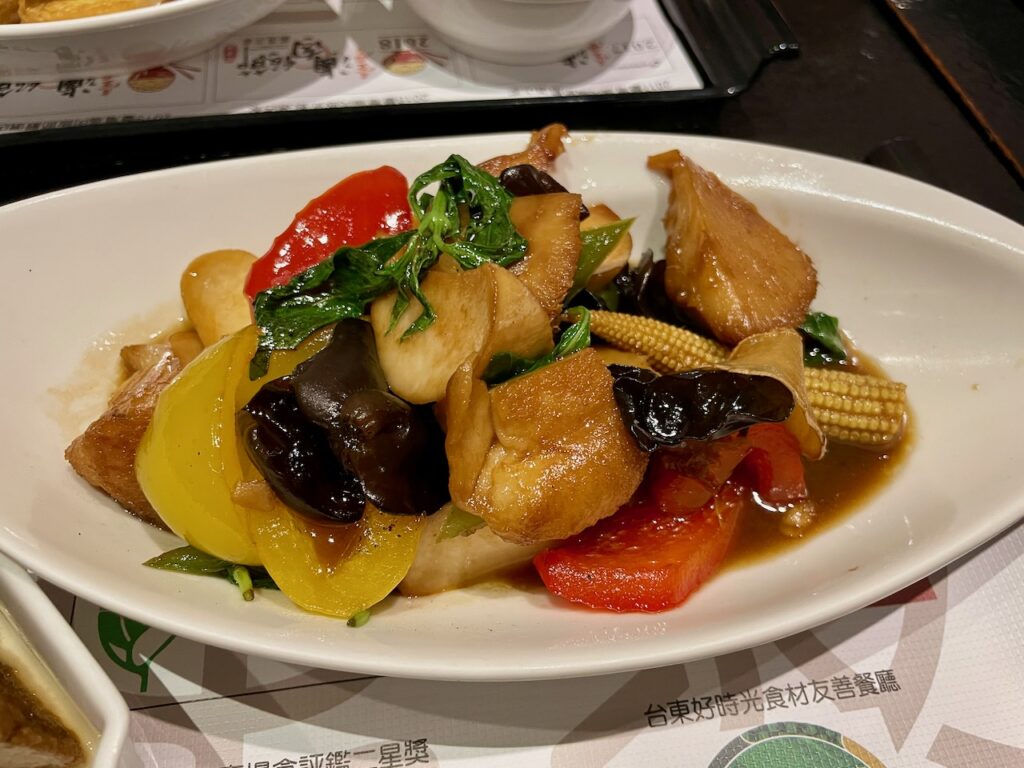
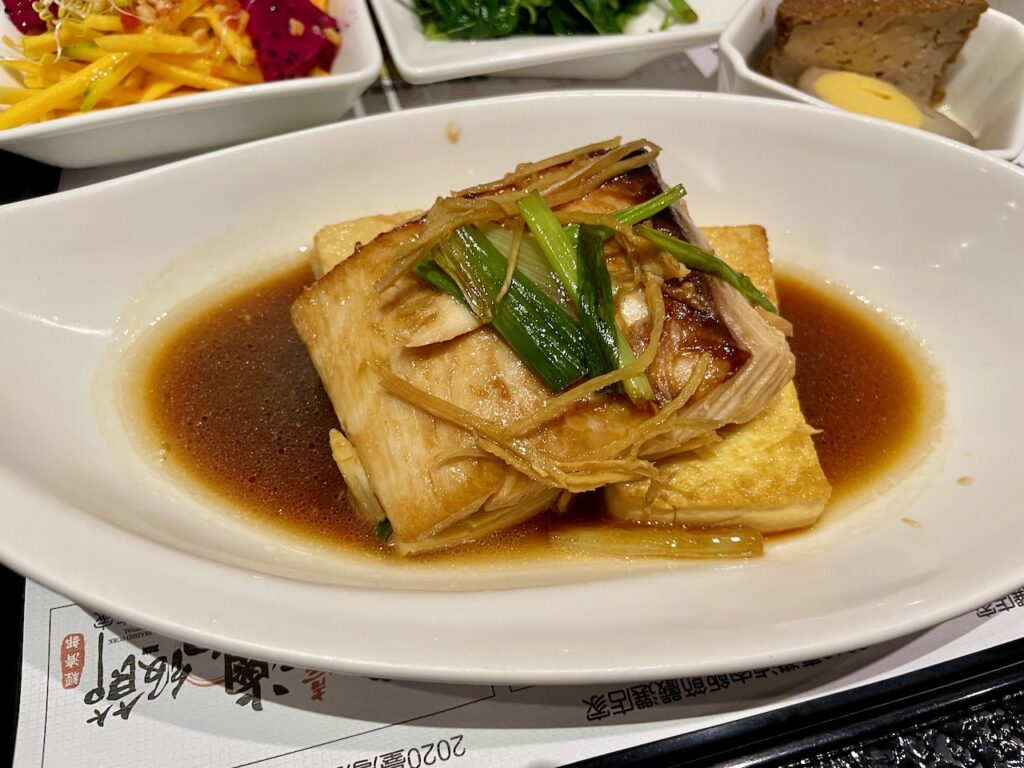
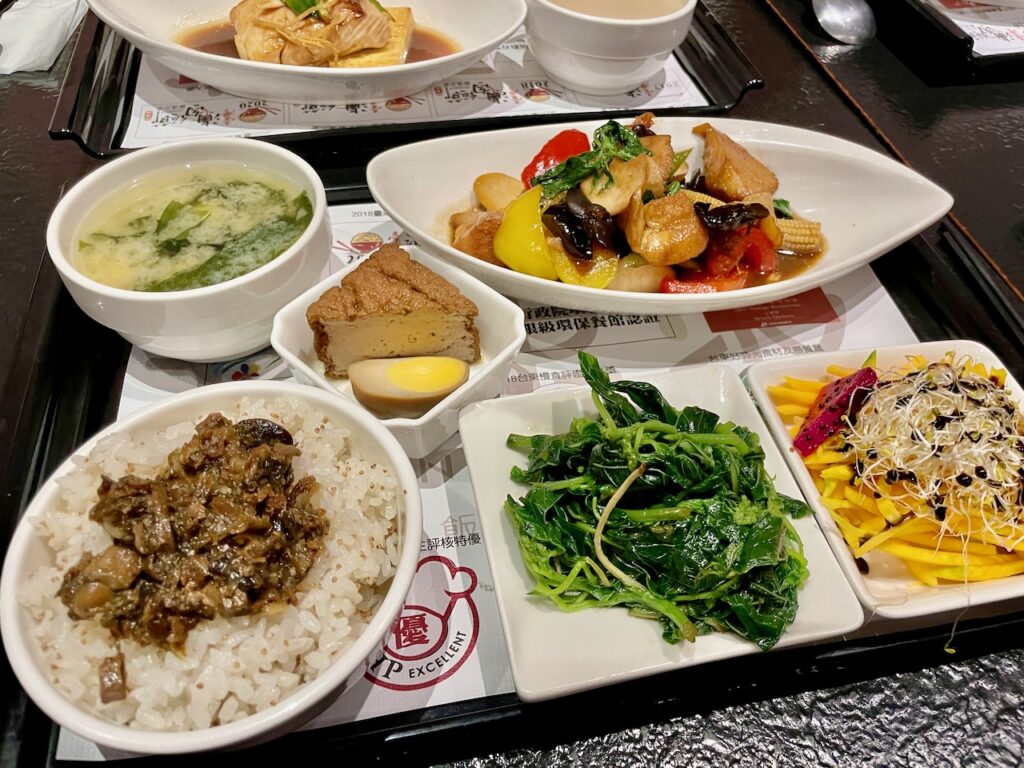

Day 2
Duoliang Train Station
Duoliang is a place of many treasures, where you can savor coffee, soak in the sea breeze, and admire Taiwan’s most picturesque train station. We had a fantastic time capturing the Instagram friendly scenery from both the ocean-facing train station and the equally famous bus stop, which happens to be one of the most photographed bus stops in all of Taiwan.
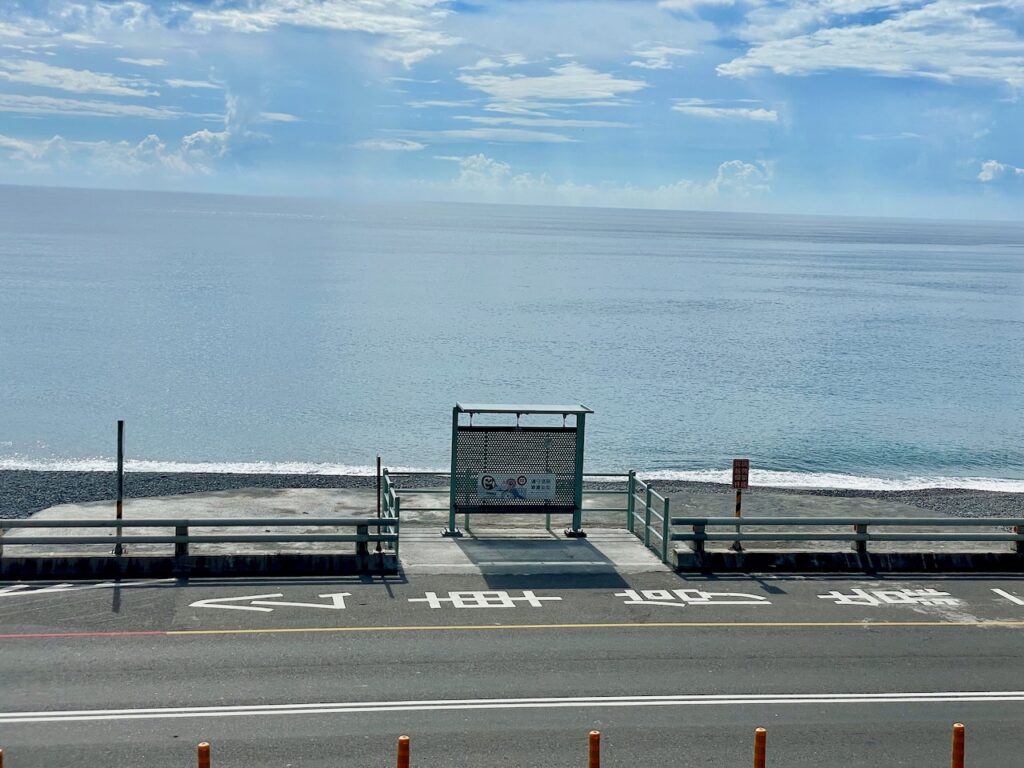
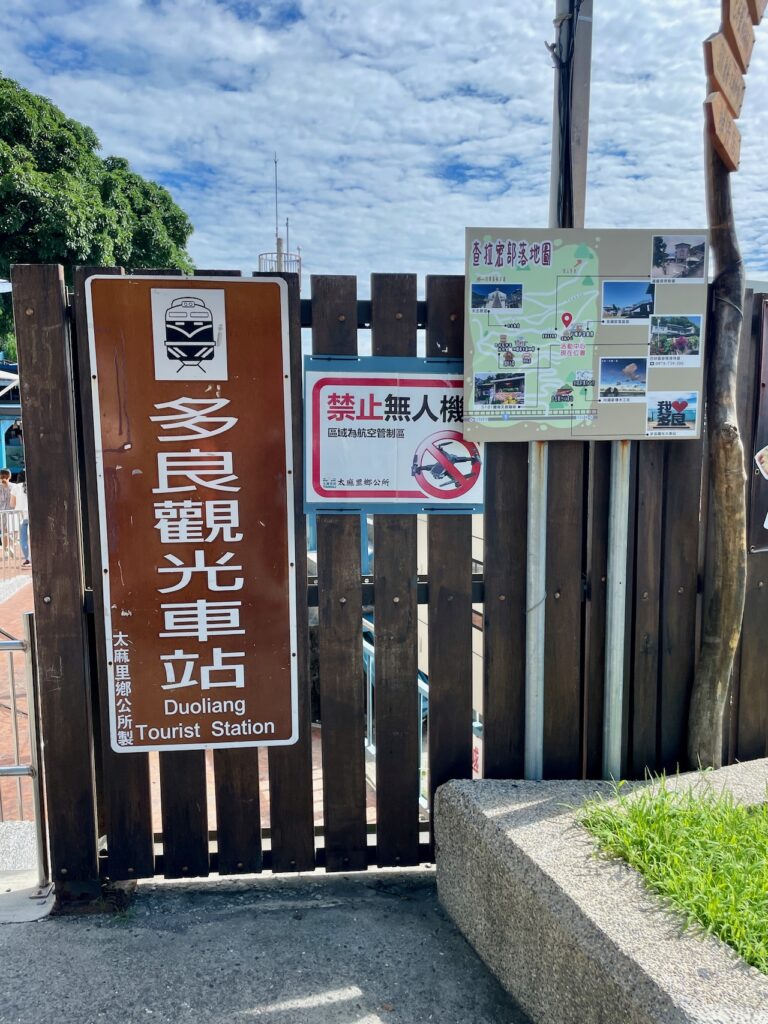
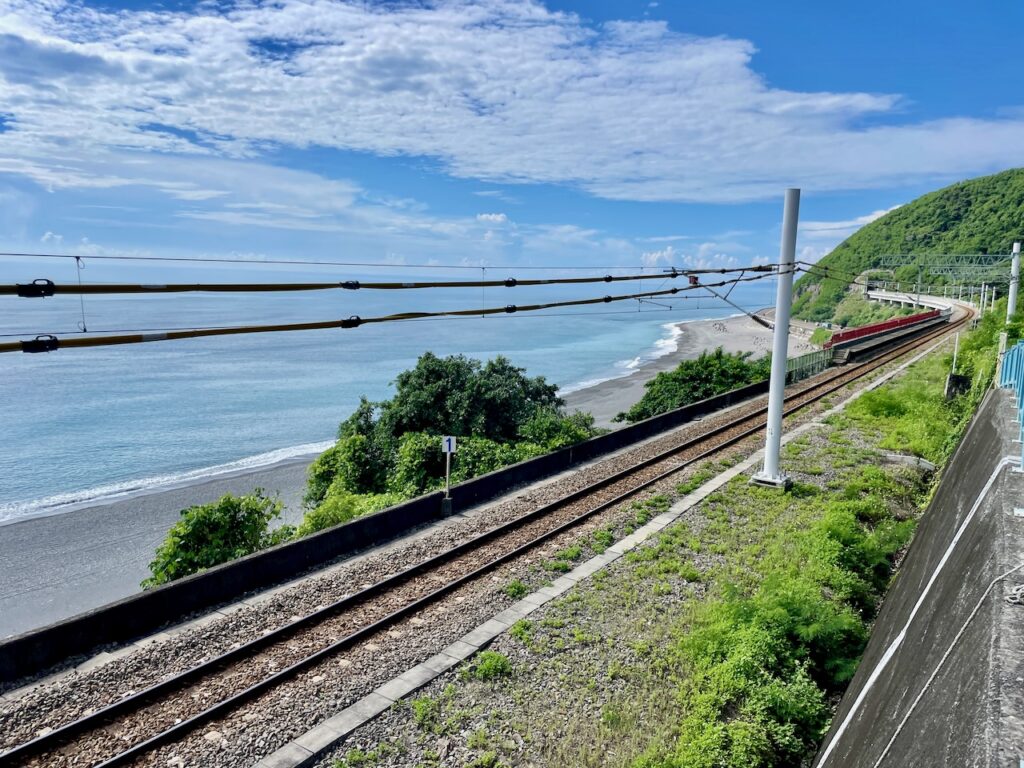
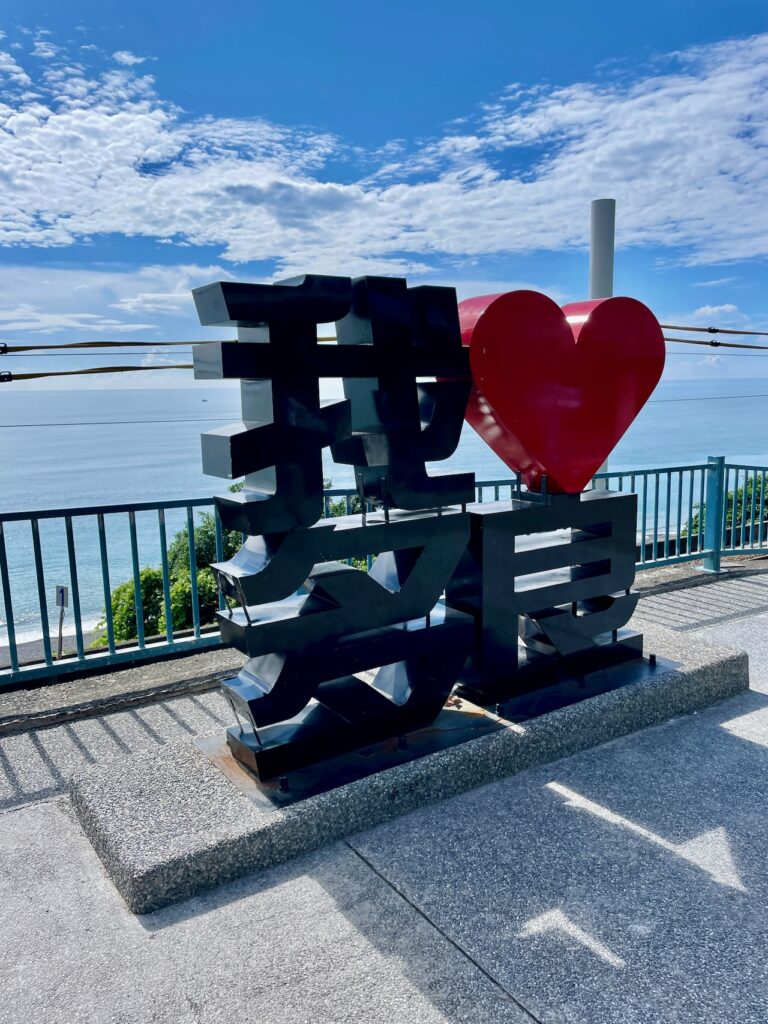
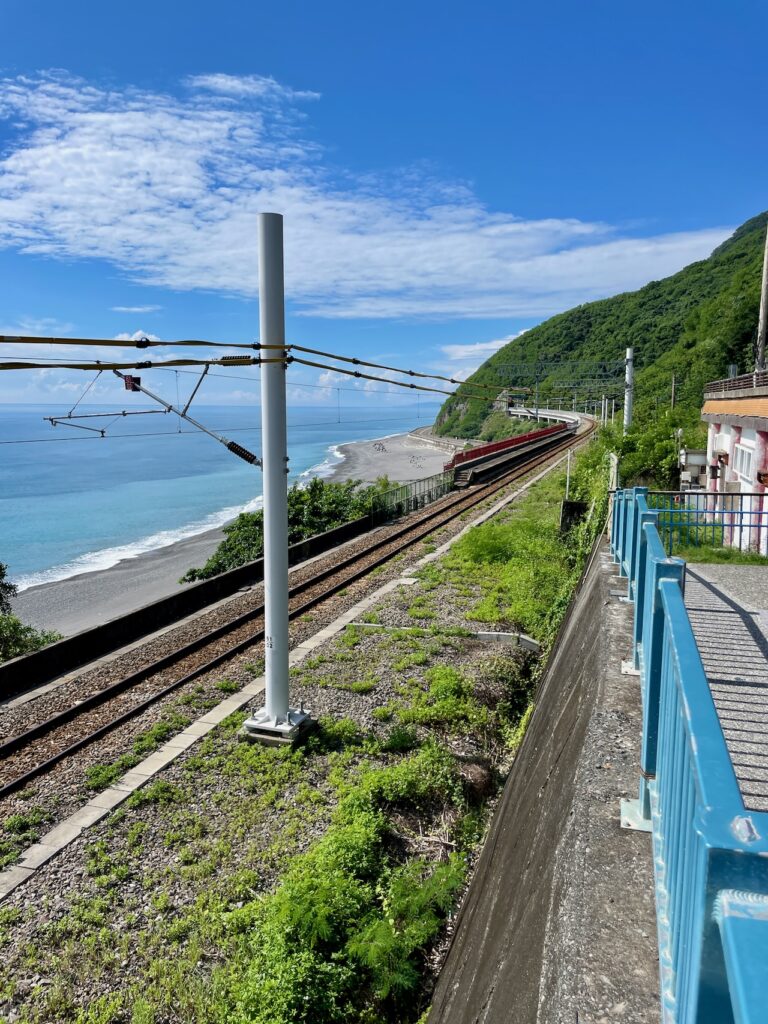
The Calavi Tribe
Duoliang is more than just a beautiful coastal area; it’s also a small village nestled in the steep mountains, housing the Calavi Tribal Community. This community is known for its intricate wooden sculptures, which artistically depict life in the region.
During our visit, we had the privilege of meeting some of the Calavi Tribe members. They welcomed us with a tea they had prepared and generously shared their stories with us.
One fascinating story they shared was about a black snake with wings that lived in the Pacific Ocean. This snake would flap its wings, creating waves and the eerie sounds of “Cala Cala” that sometimes frightened the people due to its moody and mischievous nature. One day, the snake flew into a lake above the village, and the young villagers, fed up with its antics, decided to work together to trap it in the lake. However, in its struggle to break free, the snake flapped even harder, causing the water to overflow and flood the village. The elders in the community passed down this story as a warning about the treacherous undercurrents in the sea, which may appear calm but can easily sweep you away.
After the captivating storytelling, we had the chance to visit their driftwood workshop, where they collect driftwood from the nearby ocean and rivers and craft a variety of stunning items. One particularly interesting detail was their construction technique; they don’t use glue or nails to attach the pieces of wood together. Instead, they intricately intertwine them, showcasing their remarkable craftsmanship.
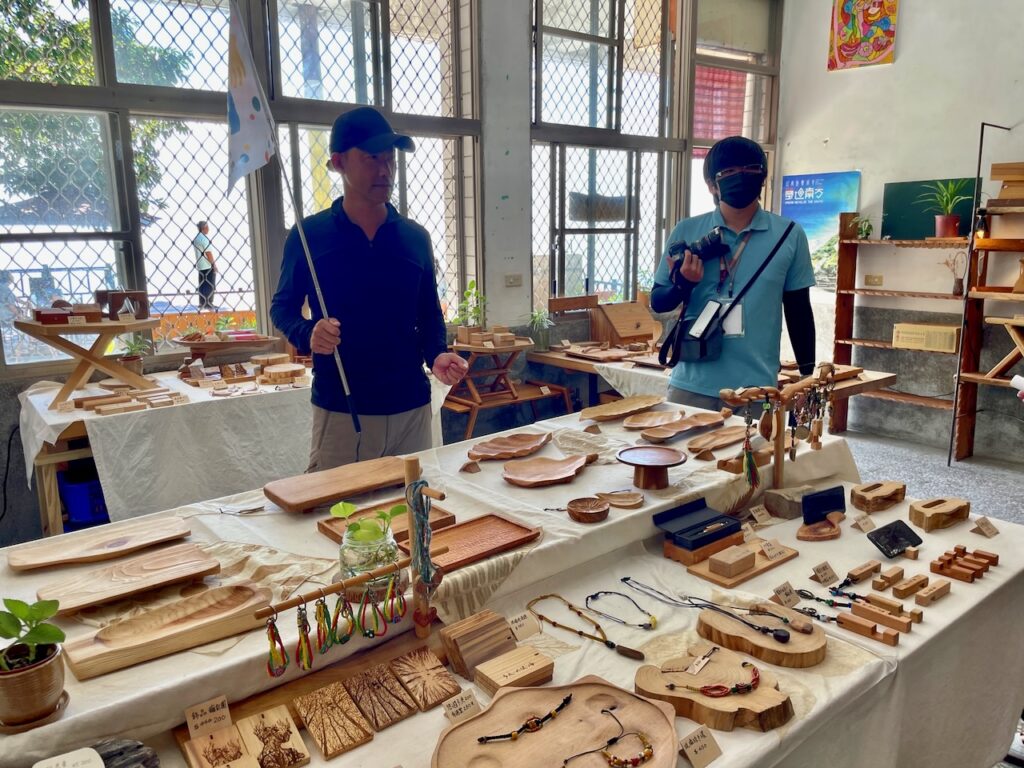
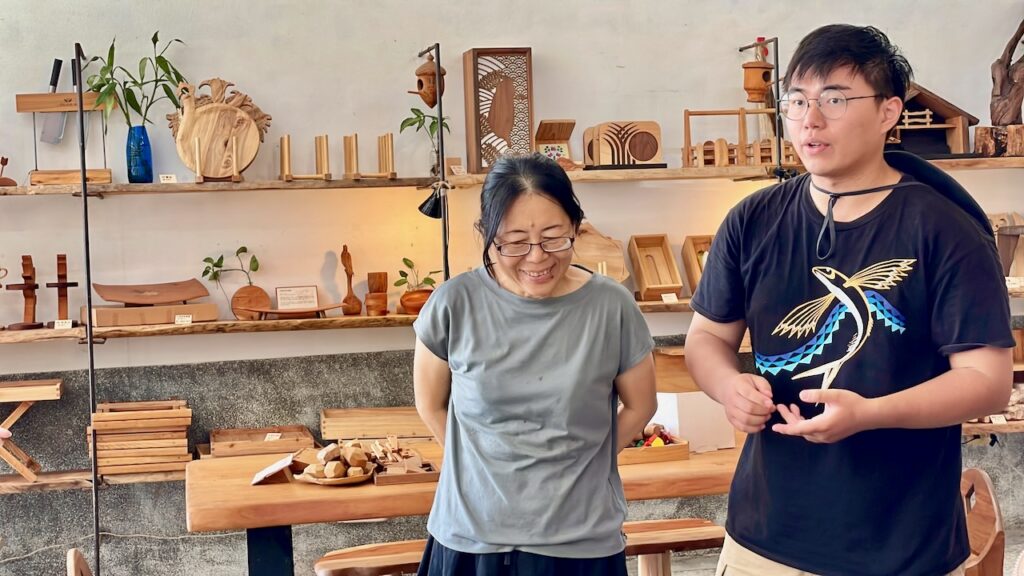
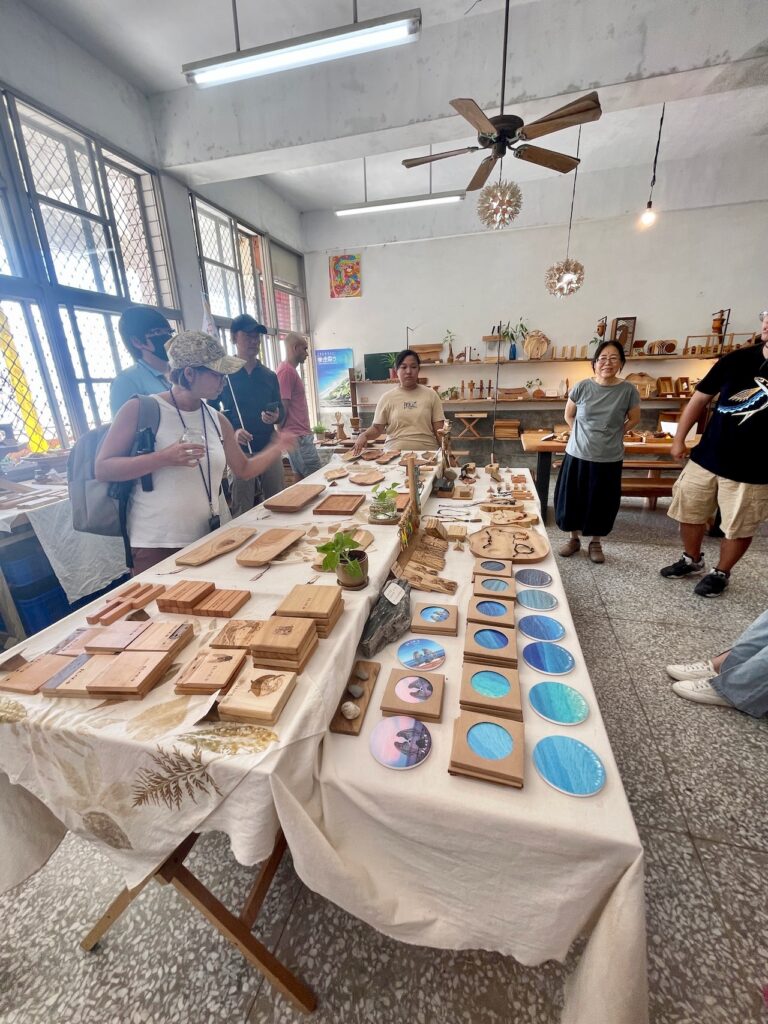
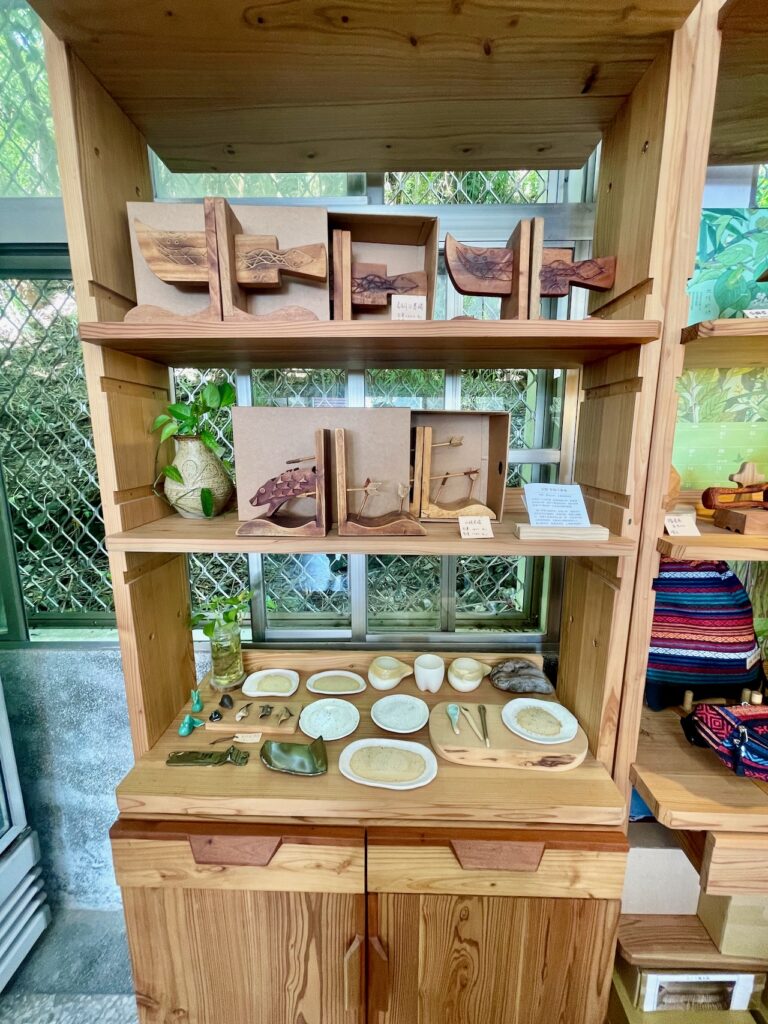
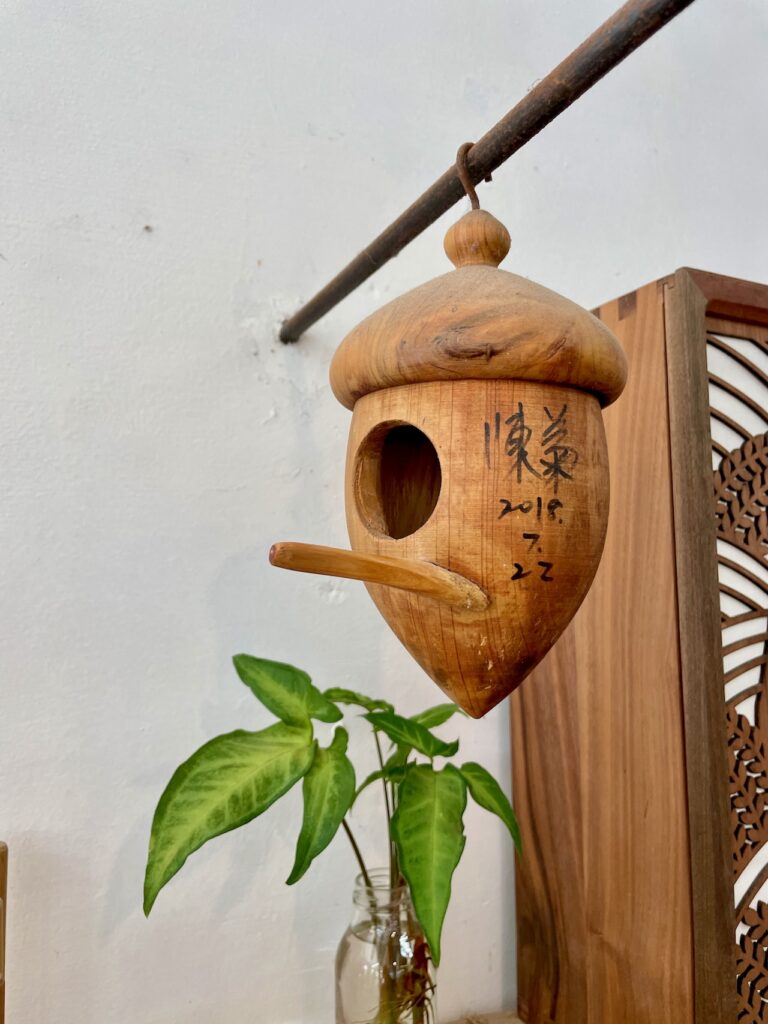
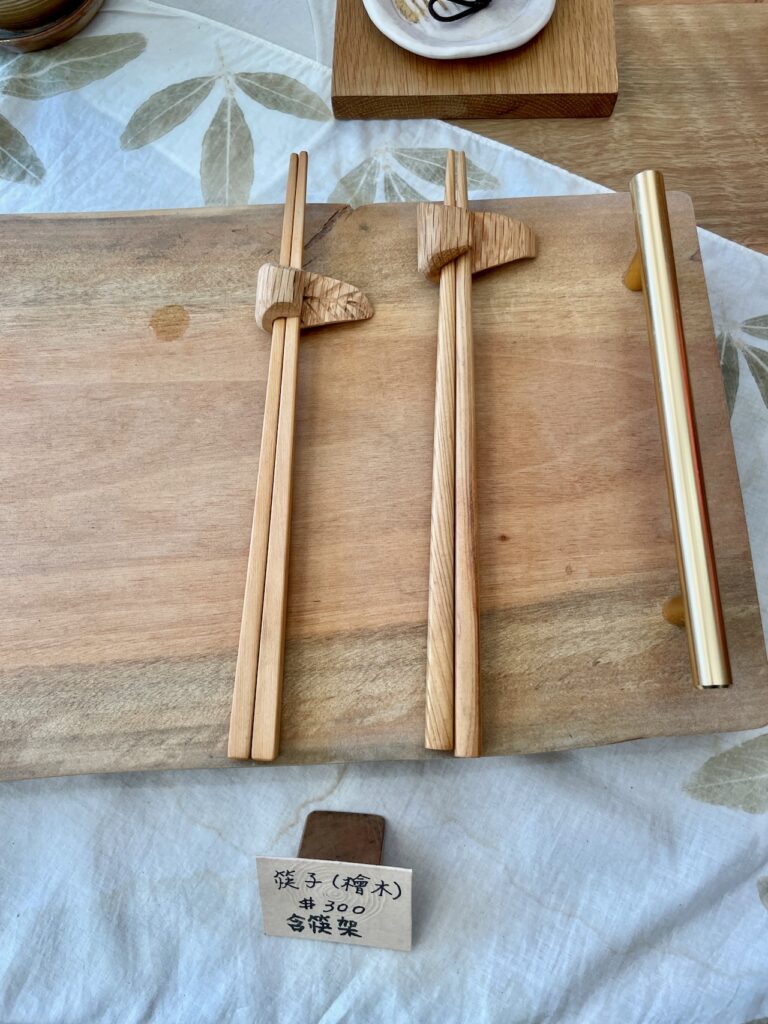
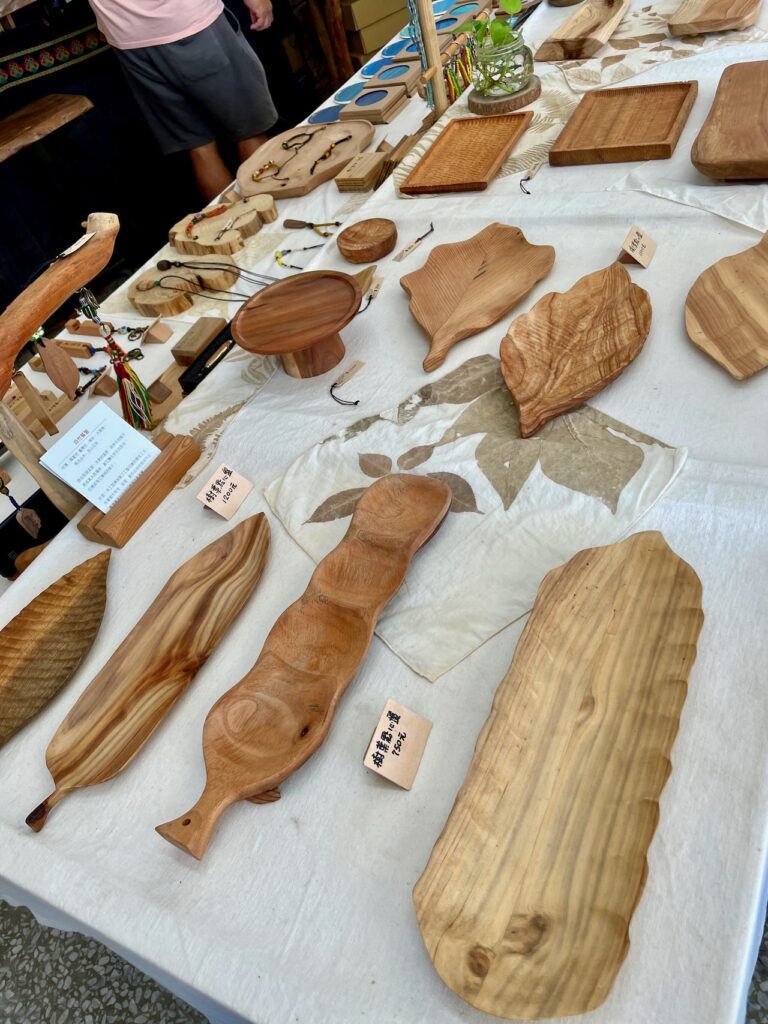
Cafe 5181
Next, we ventured to Cafe 5181, a charming café overlooking the vast expanse of the ocean. This café has a remarkable story behind it. It was created from the ground up by a determined woman who turned it into a highly popular establishment, often requiring advance bookings. We found ourselves fortunate enough to have the café all to ourselves for a few precious hours. What’s more, the café is a lifeline for the local community, providing employment for many individuals who might otherwise be lured to bigger cities in search of higher-paying jobs.
While at Cafe 5181, we sampled a range of their offerings, including coffee, juices, and smoothies. What truly left an impression on us was the sheer variety of products produced by the café. From intricate carvings to rich coffee and even dark chocolate (a relatively rare find in Taiwan), it was evident that this café was a hub of creativity and industry.
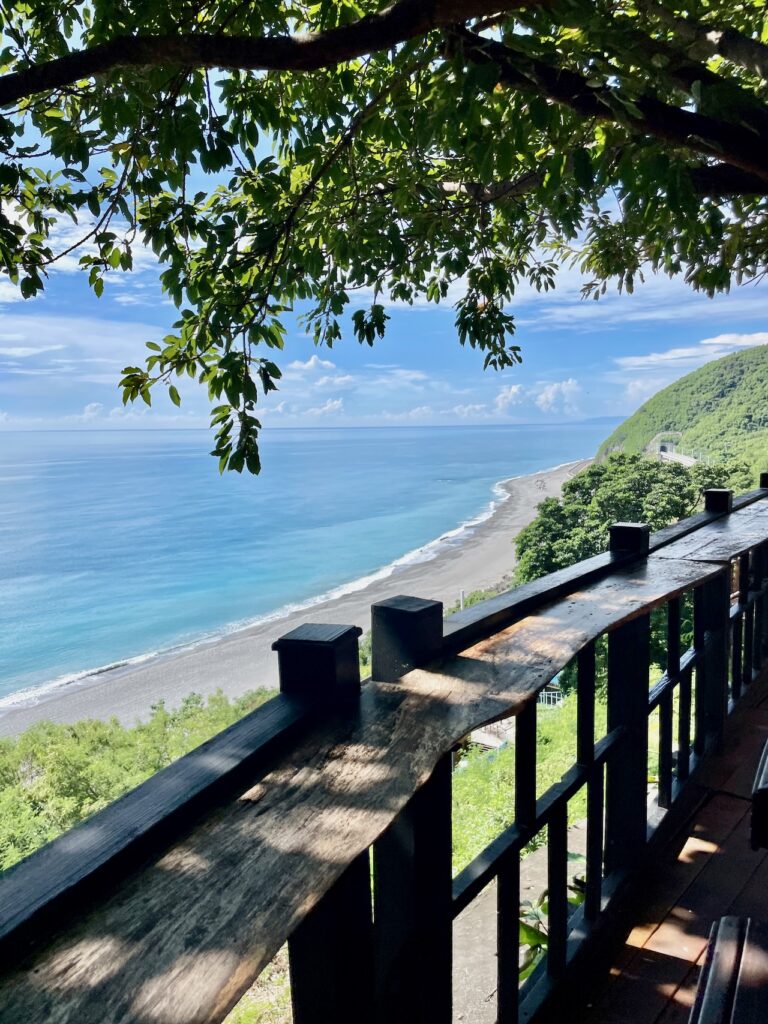
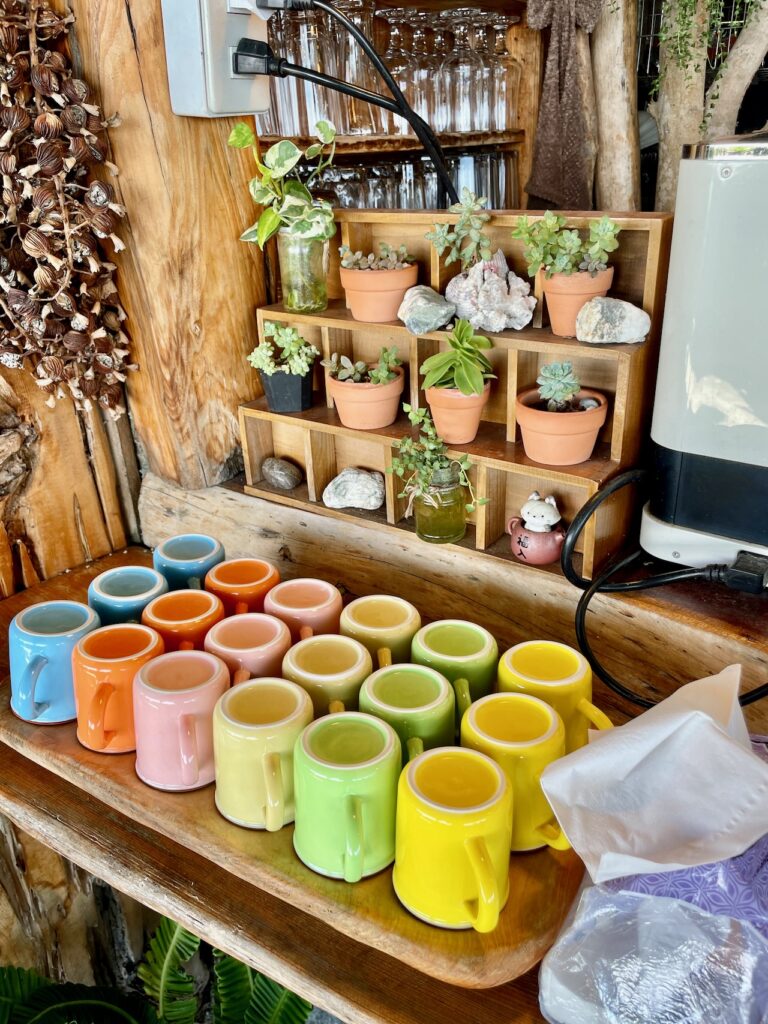
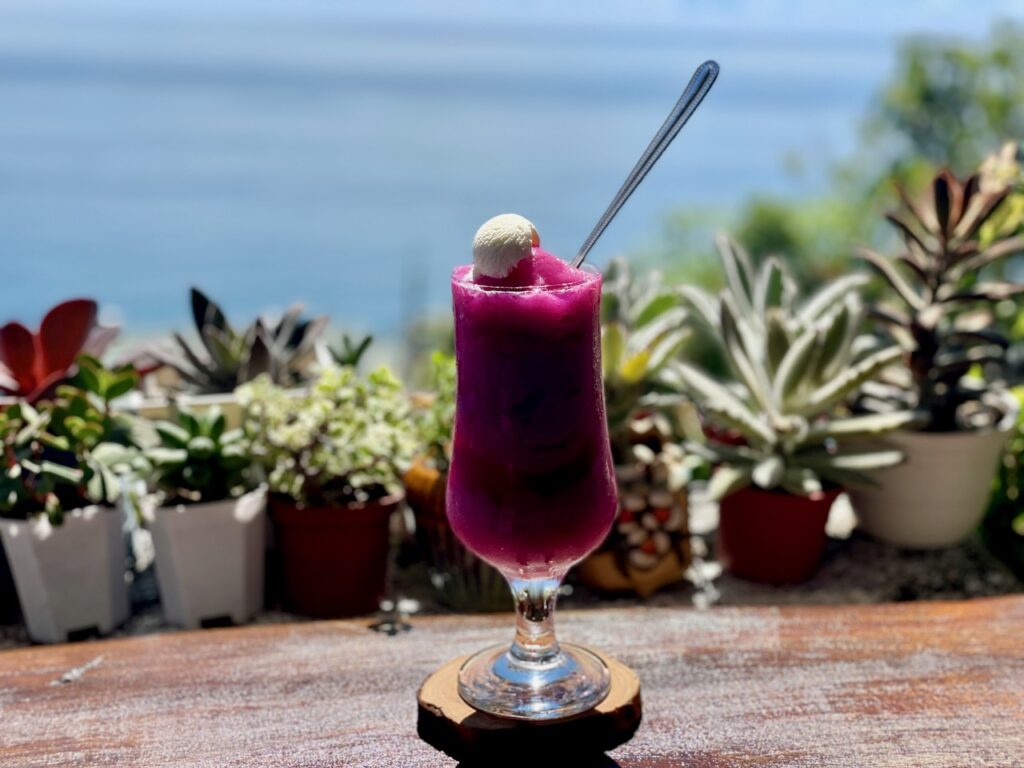
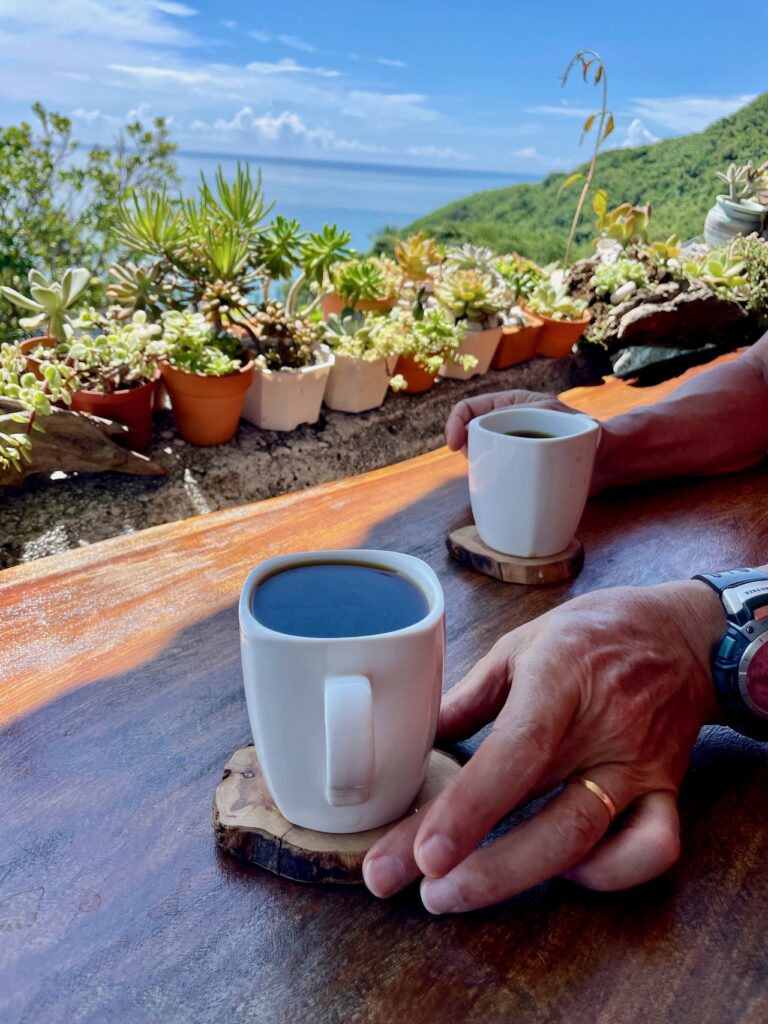
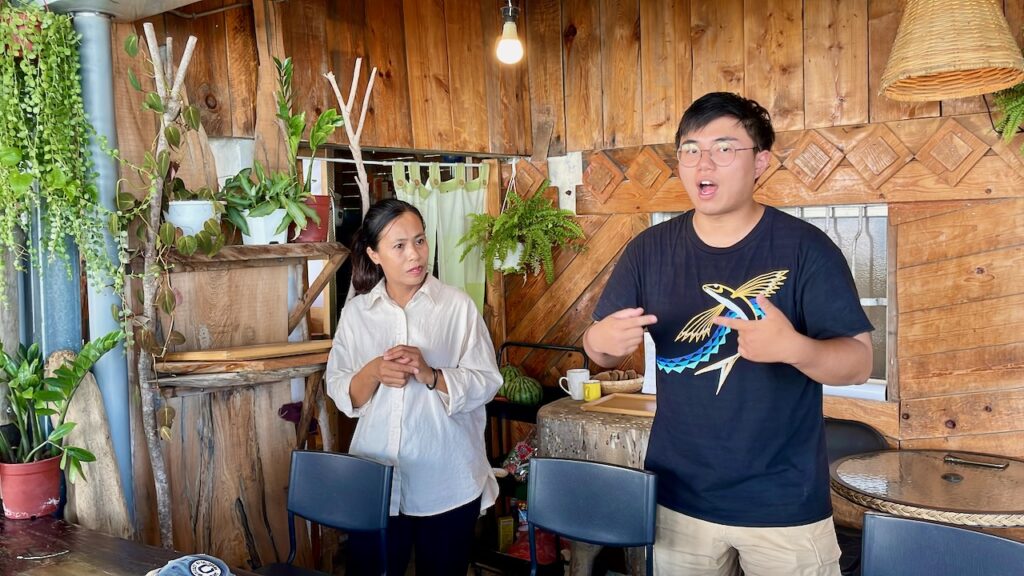
Ni Camak’s kitchen Experience
For lunch, we had the privilege of meeting with the Paiwan indigenous people of Taiwan at Ni Camak’s Kitchen for an enriching two-hour tasting experience. What sets this restaurant apart is the vision of its Paiwan chef: Camak. After years of catering to 5-star hotels, Camak made the decision to reimagine Western dishes using indigenous ingredients. Our host took us through each dish, providing insights into its origin and composition, resulting in an interactive culinary adventure. The menu featured a delightful array, including pizza, pasta, salad, millet dishes filled with delectable pieces of pork and so much more…
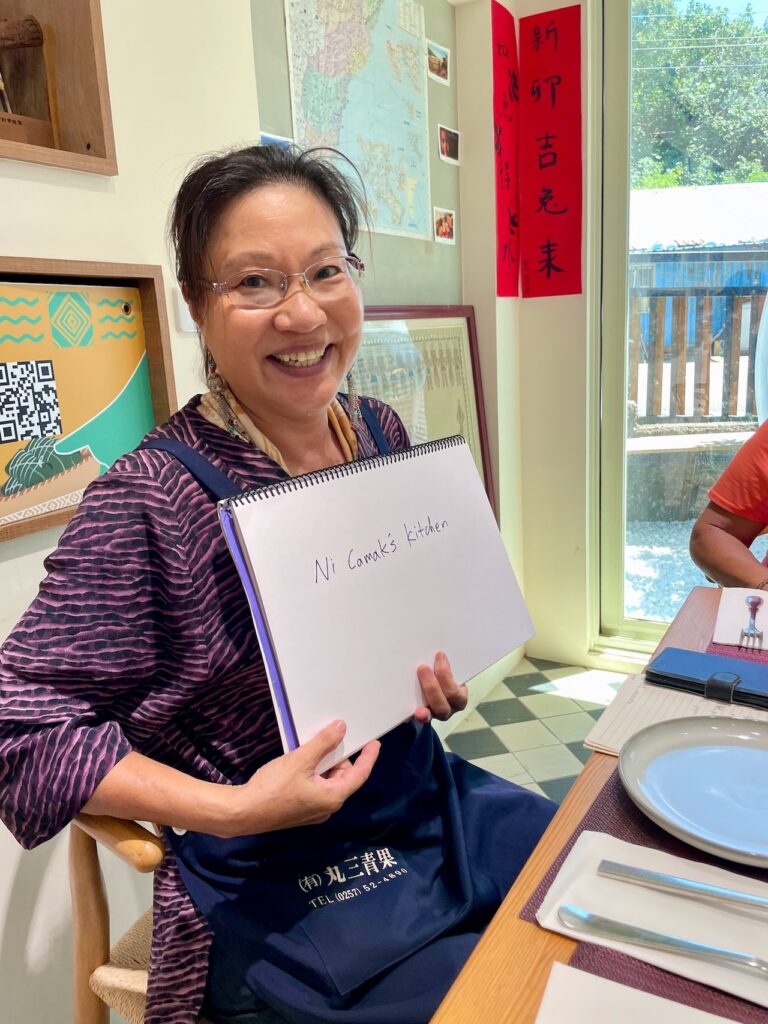
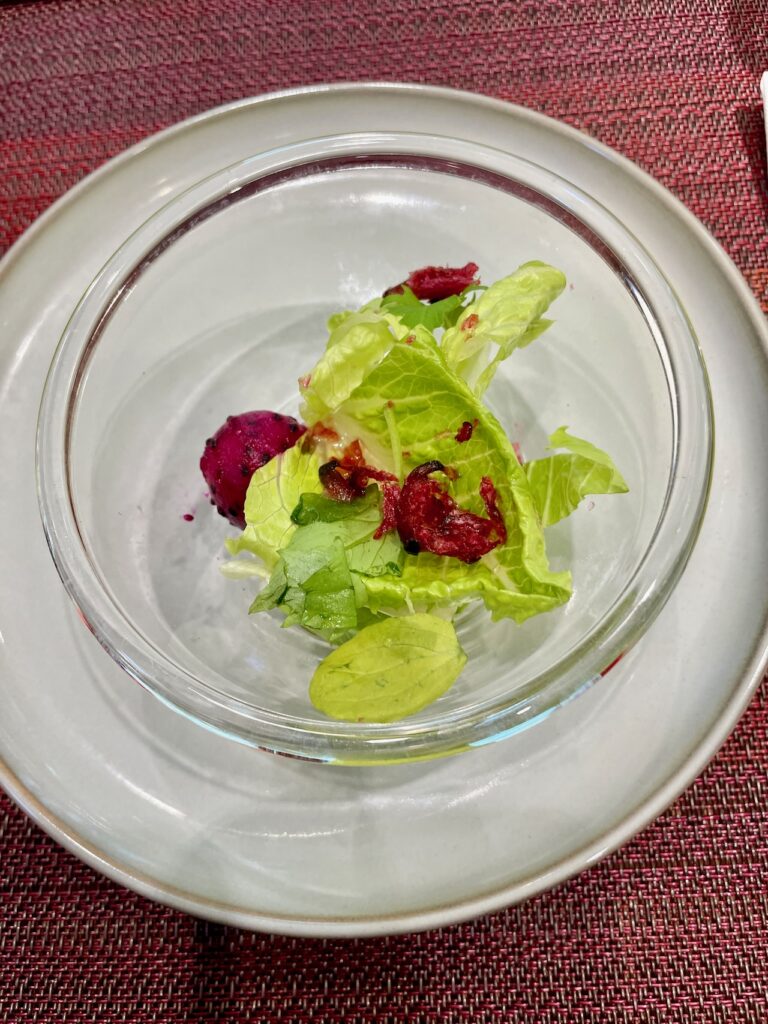
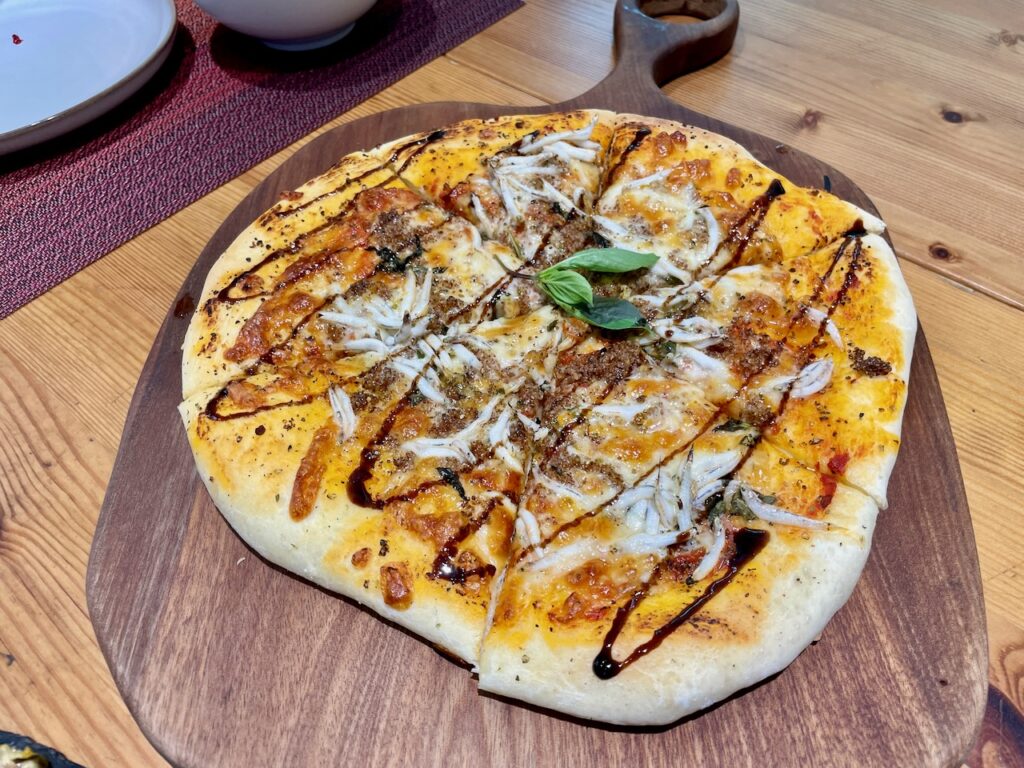
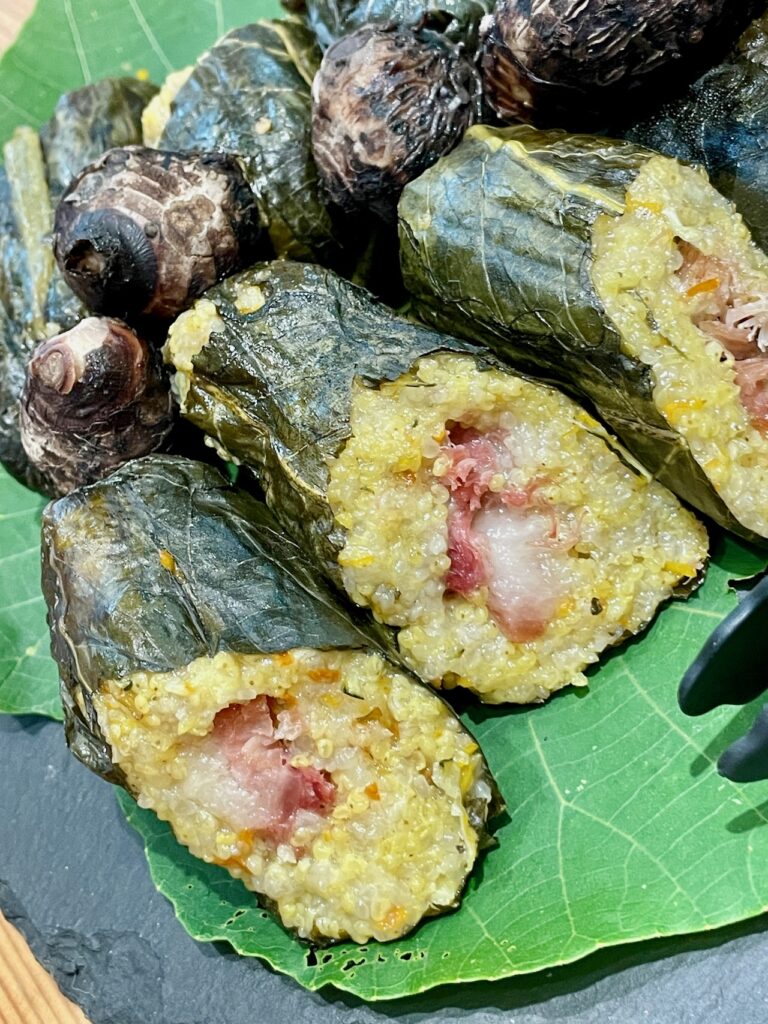
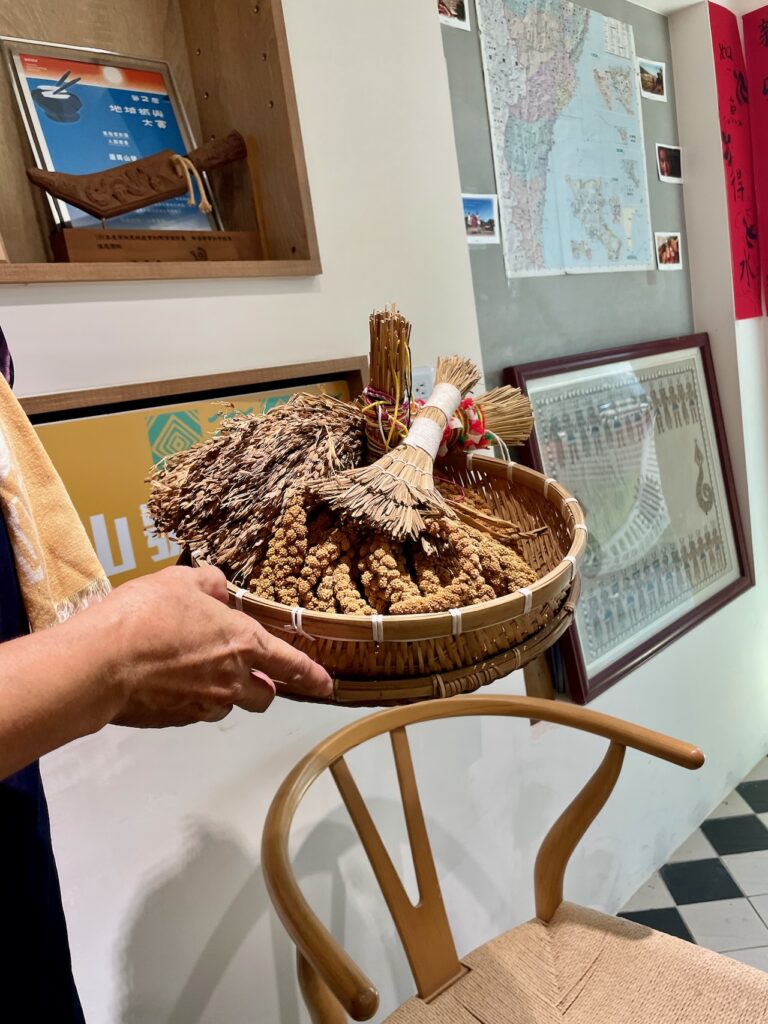
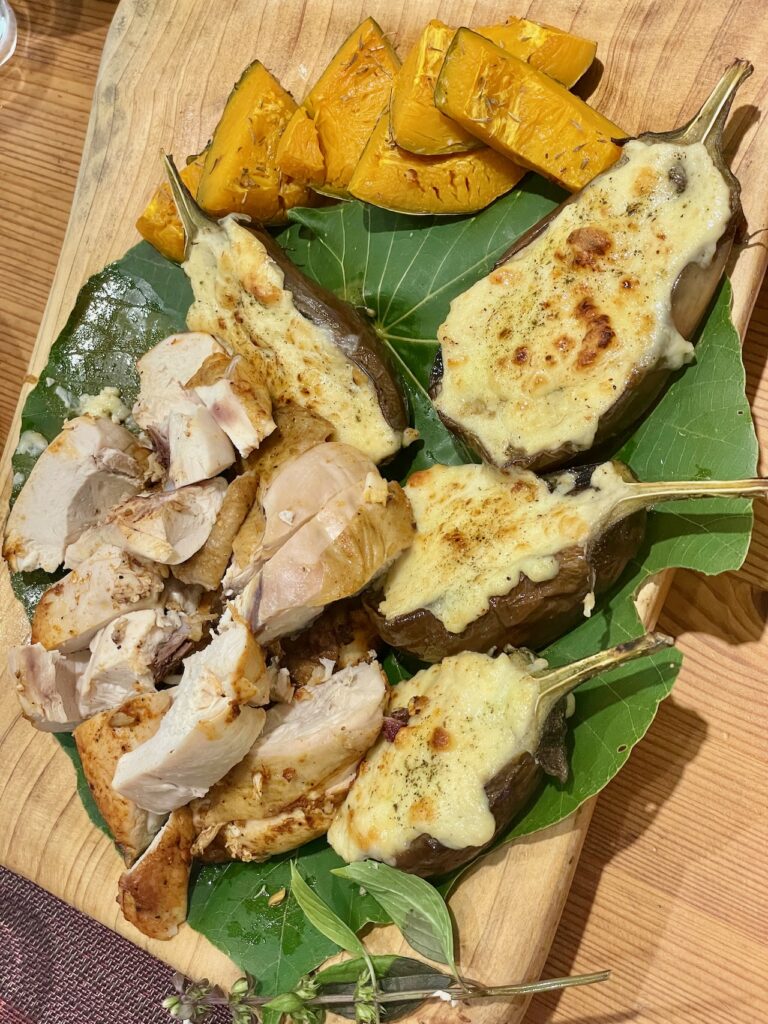
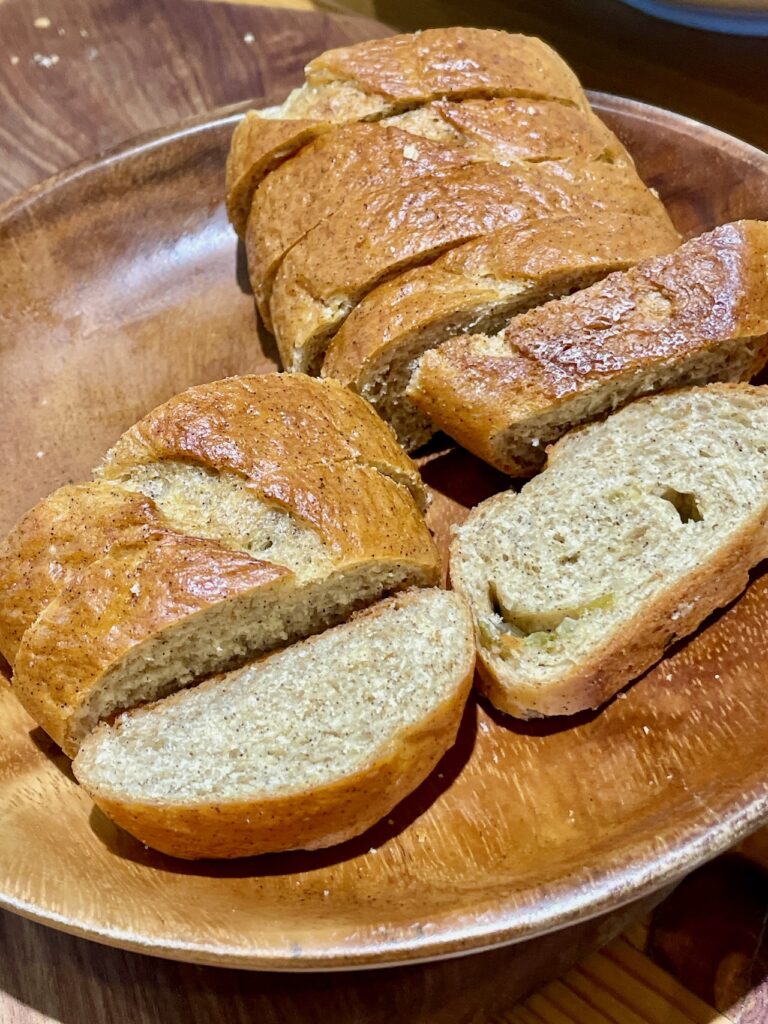
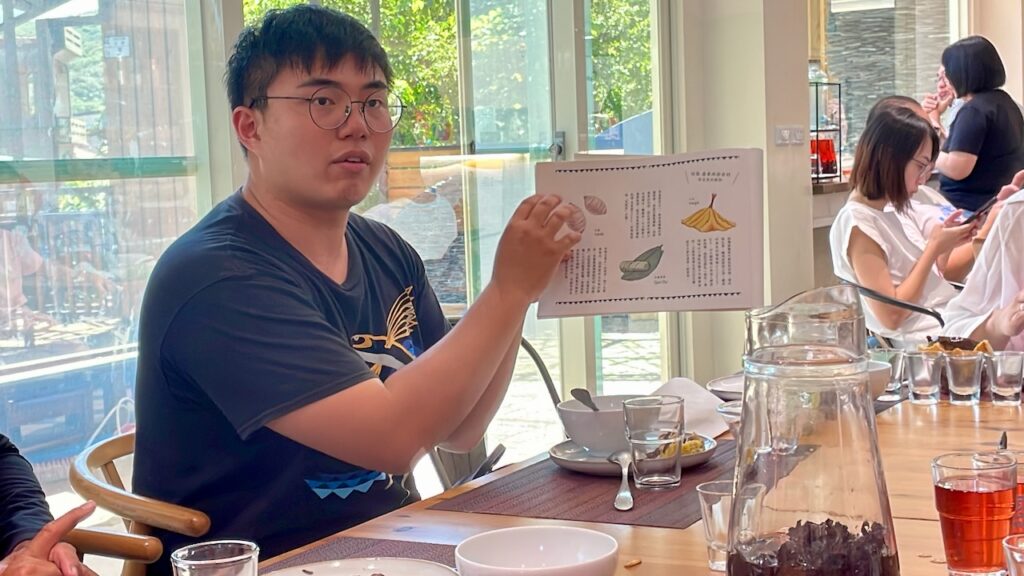
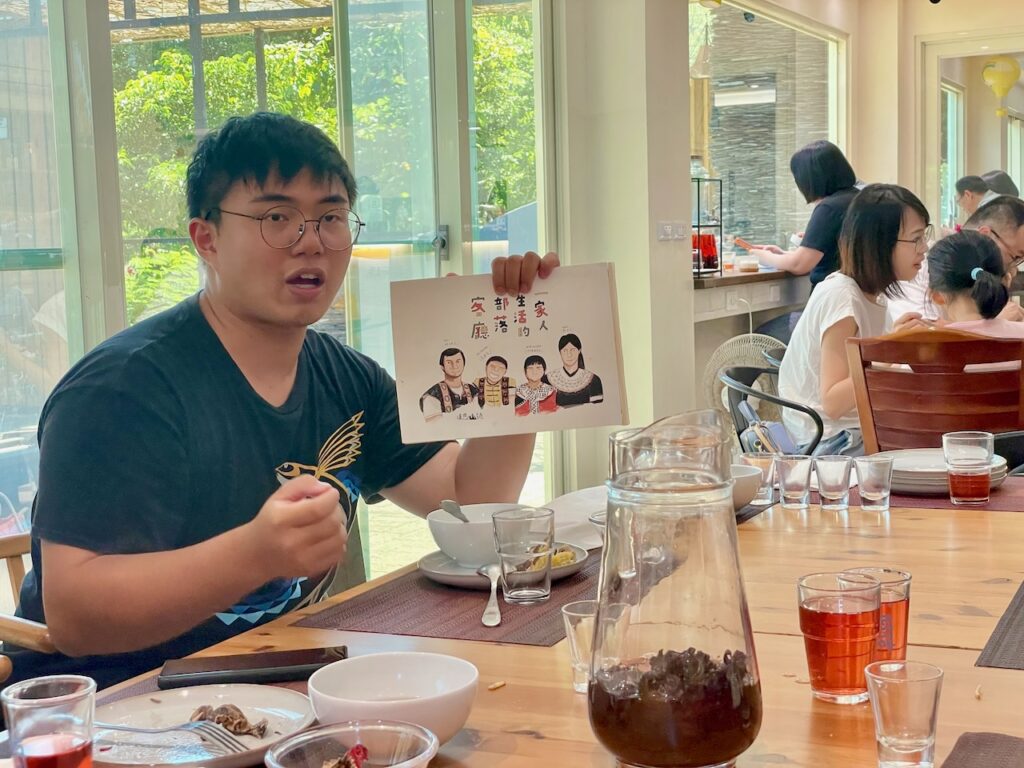
Chanting
Following our meal, we had the opportunity to delve into chanting and practice a few local songs with a resident from the village. Her infectious energy and boundless joy were truly inspiring. Throughout the experience, we not only learned the songs but also gained insight into her personal life and how these songs were traditionally used as a means of communication within the tribe. It was an engaging and incredibly enjoyable experience, connecting us more deeply with the local culture and traditions.
These songs served as a unifying force, bringing people together, acting as rallying cries when it was time to return home, and serving as a means of communication within the community.
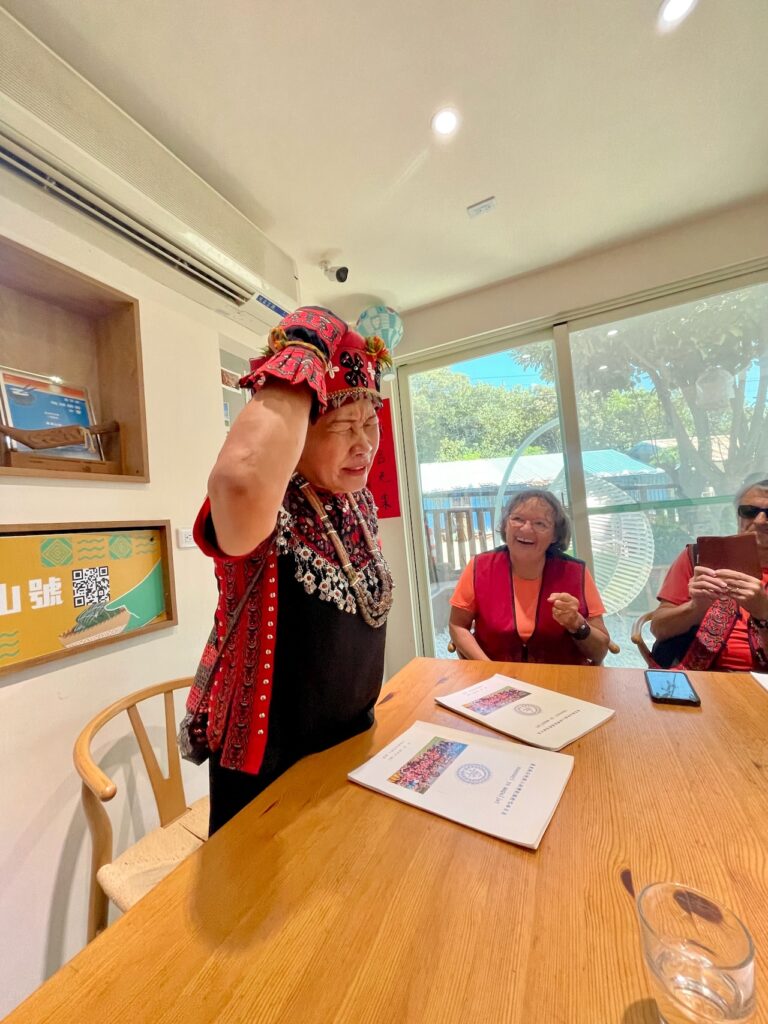
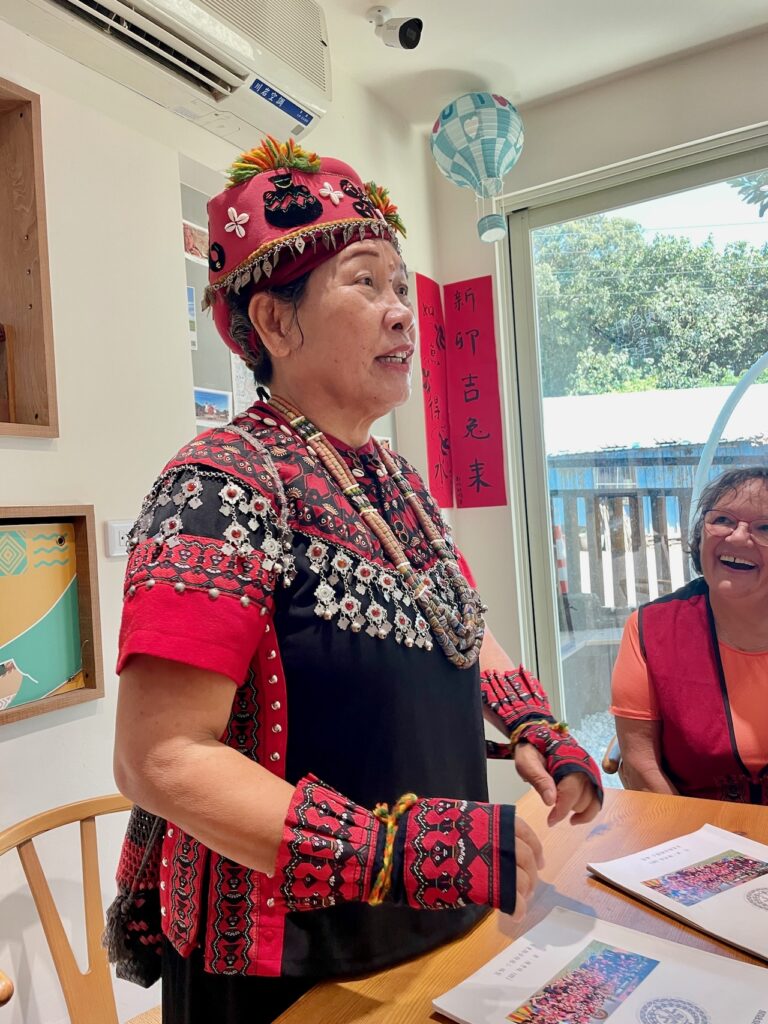
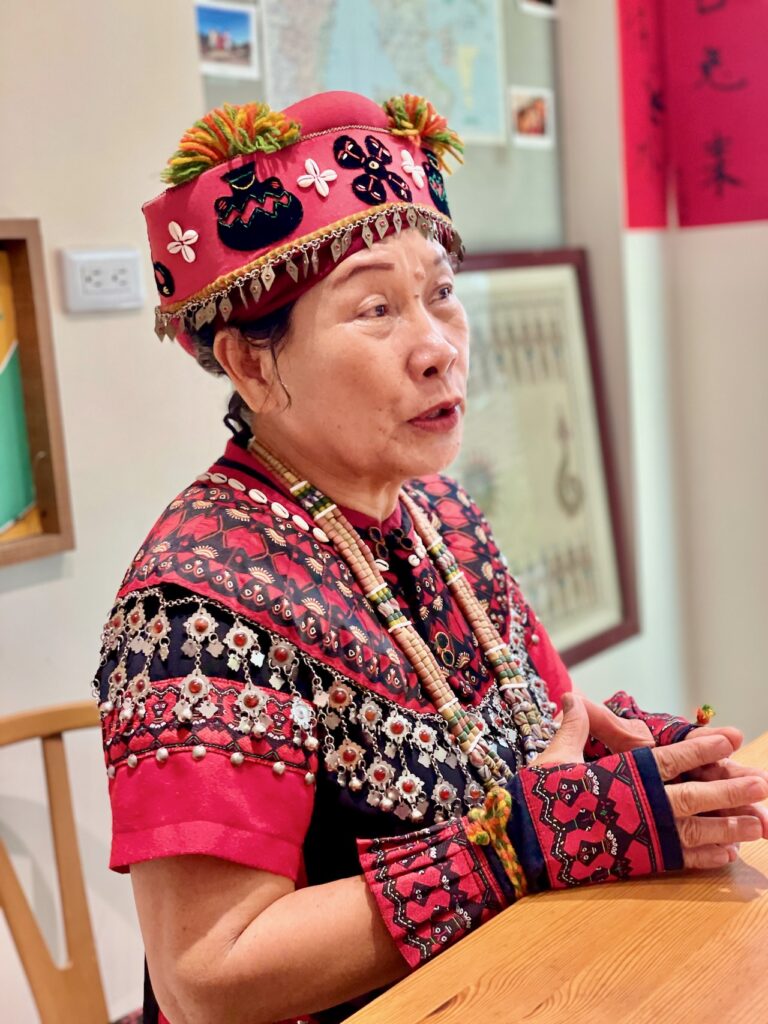
Town walking tour
To conclude the afternoon, we dedicated an hour to strolling through the neighboring village. During our exploration, we delved into the local history, interacted with some of the villagers, visited the community’s grocery store, admired the church, and stepped inside the school. One highlight was receiving a warm welcome via an audio announcement from the village chief, typically reserved for significant announcements, which was a special gesture that left a lasting impression.
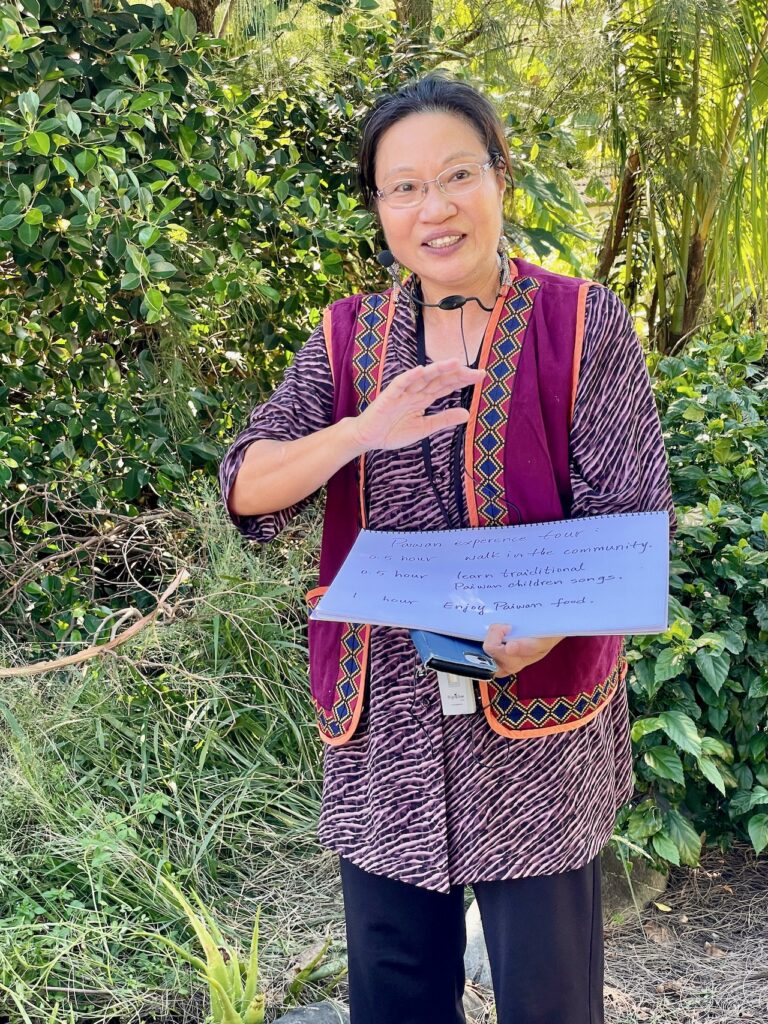
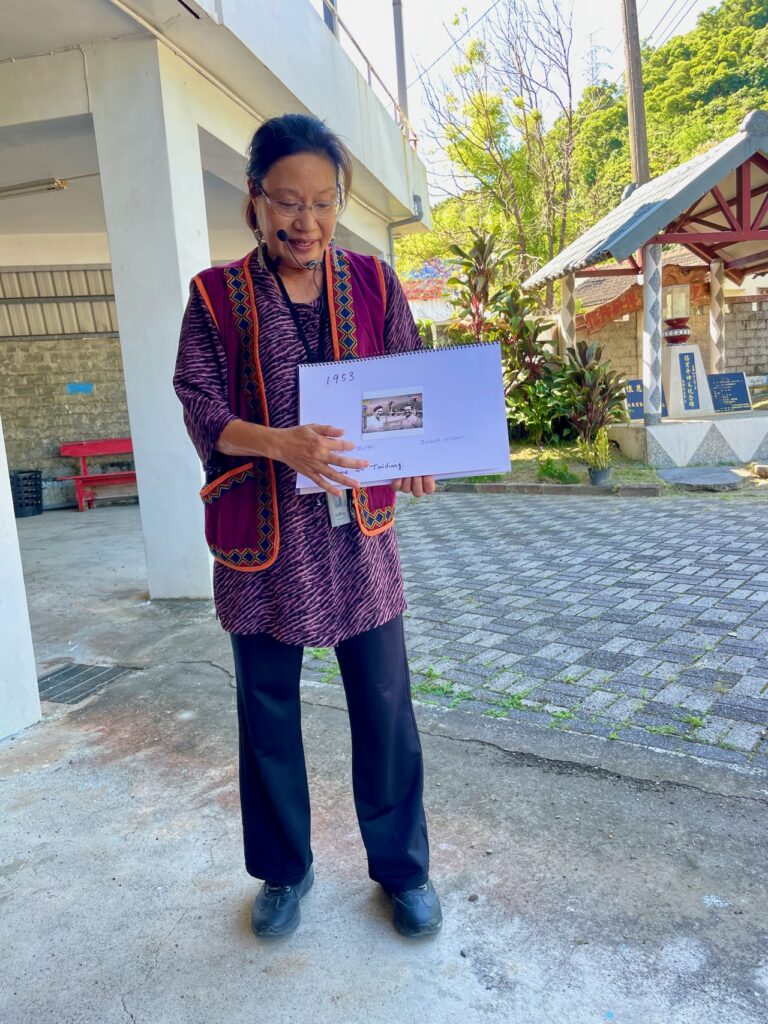
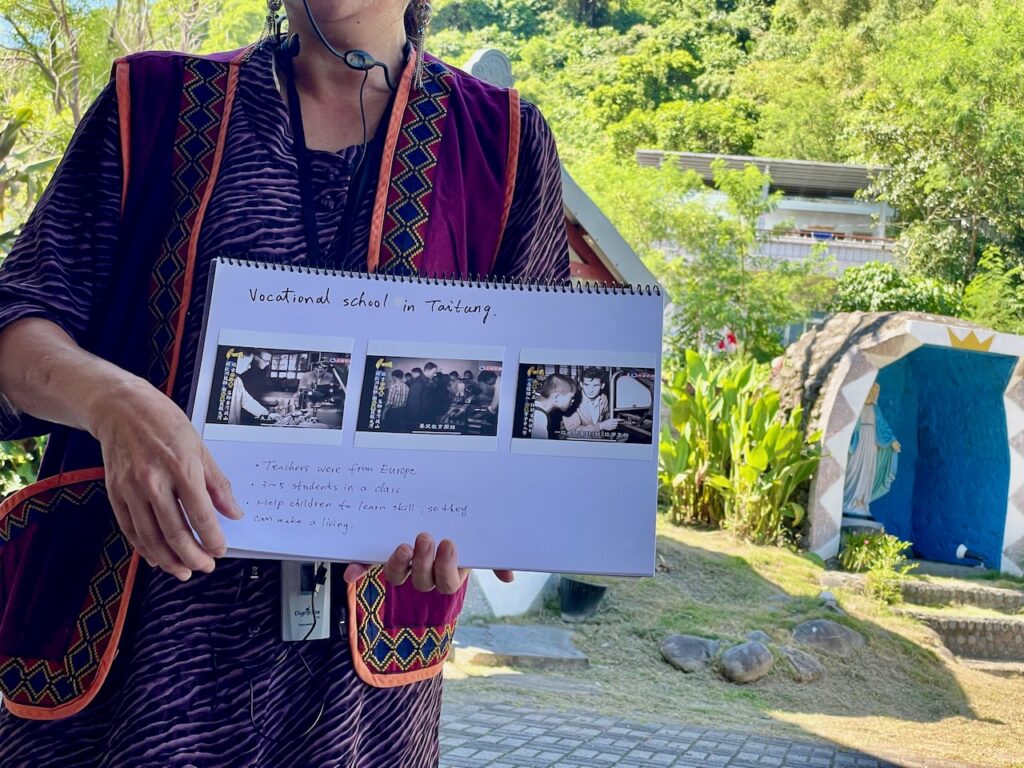
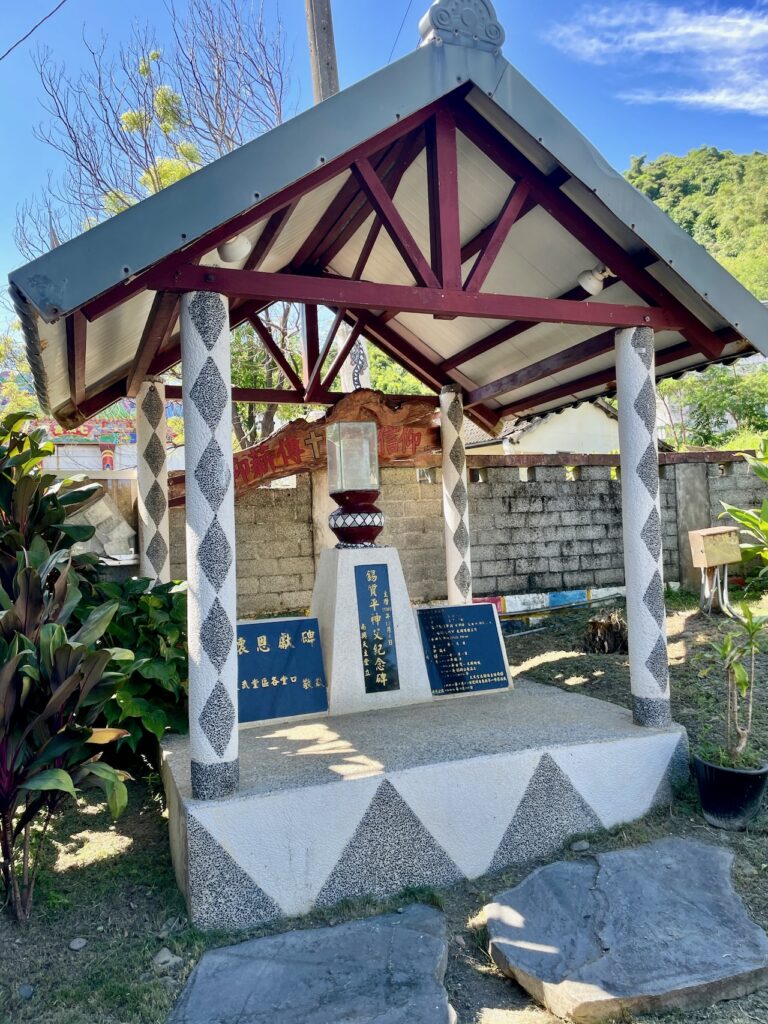
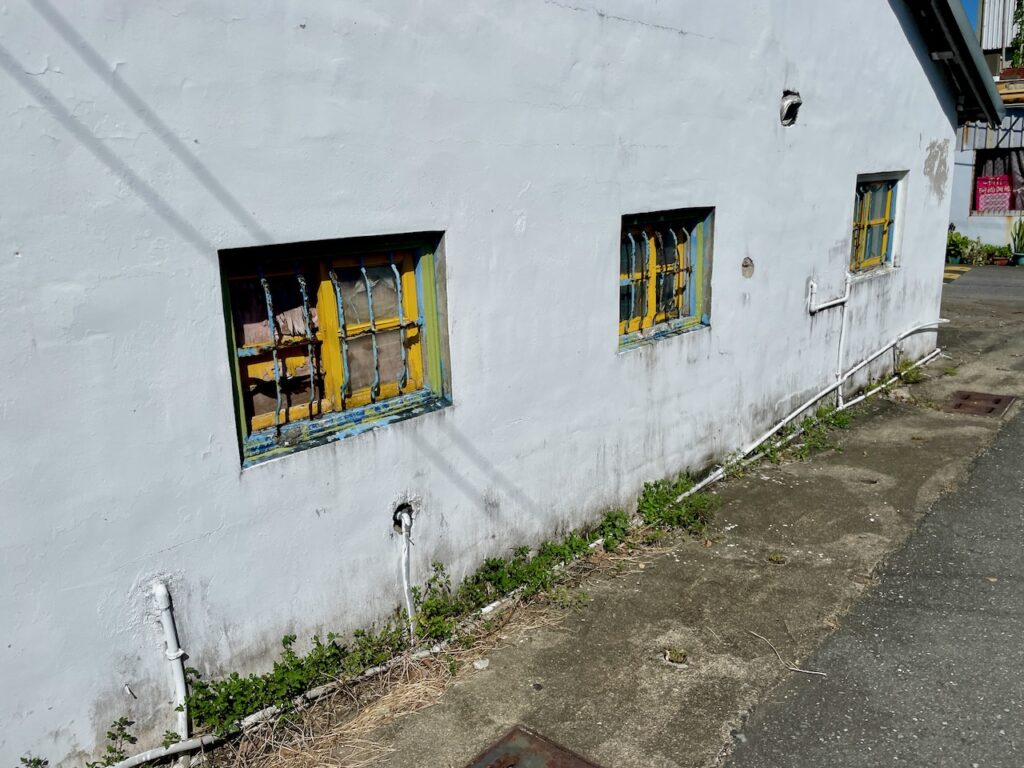
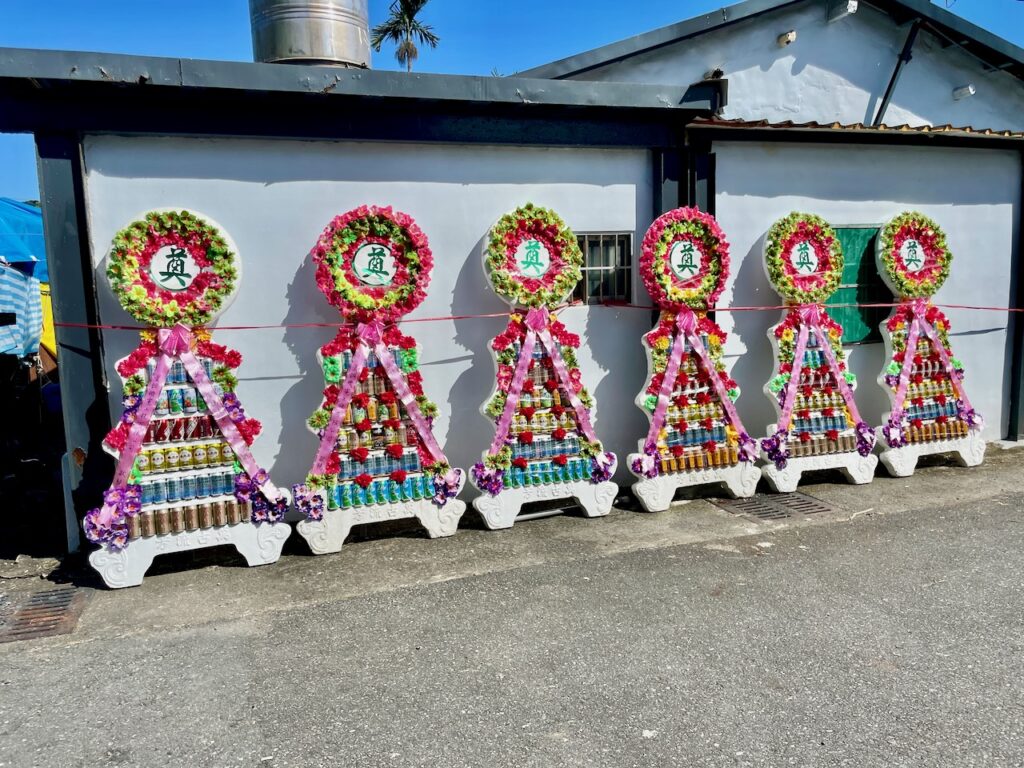
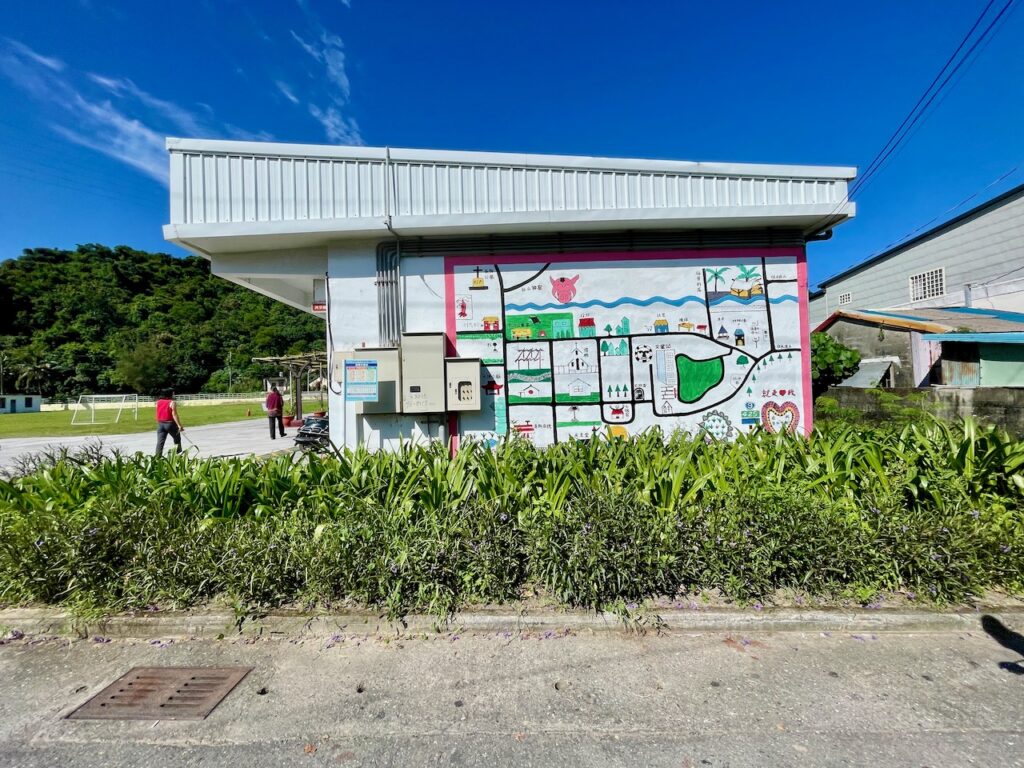
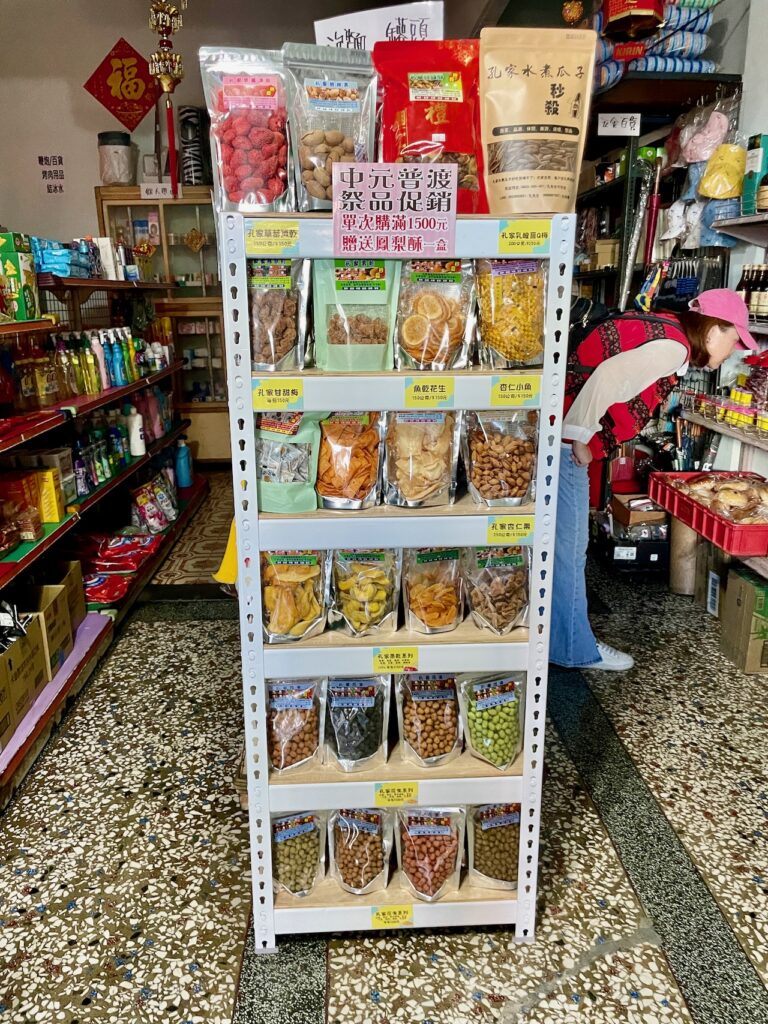
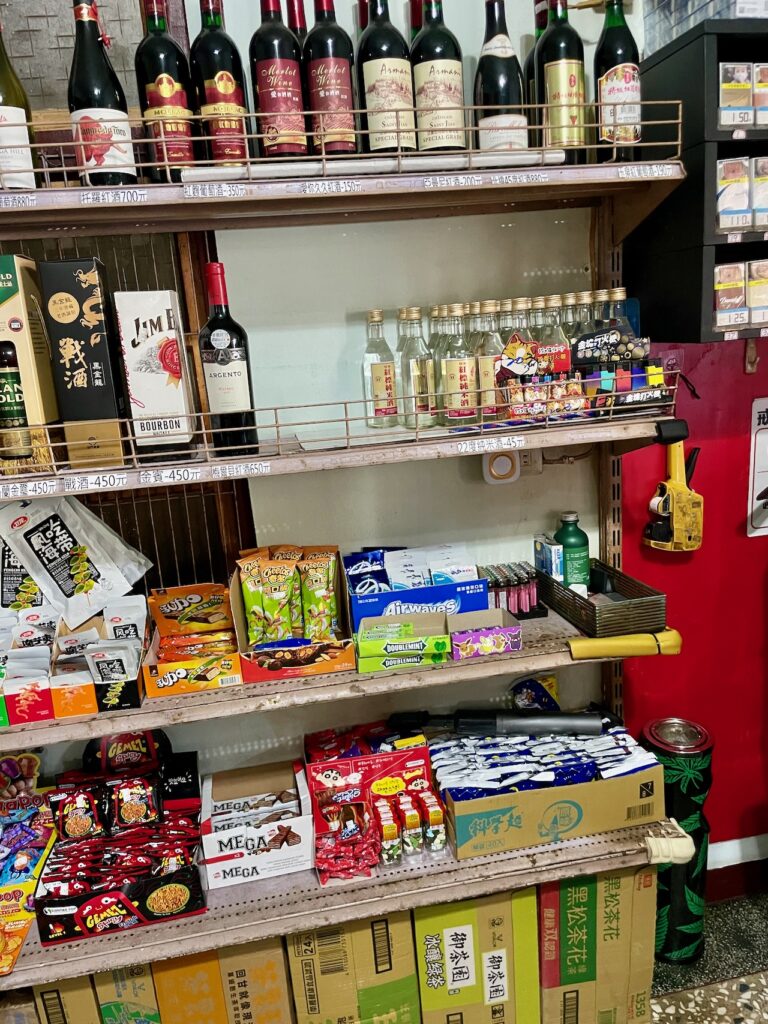
Heading back home
Unfortunately, it was time for us to head back home to Taipei. We bid farewell to our amazing crew, who kindly dropped us off at the Taitung train station, just as they had picked us up. Three hours later, we were back in Taipei, ready to get a good night’s sleep!
Our Bottom Line
We’ve been very grateful for the Taitung Government to invite us to be part of this itinerary and initiative. Not only is Taitung an underrated destination in Taiwan for tourists, but it is also one made up of wonderful, generous, and loving people who are motivated and excited to share their practices, culture, and food with the rest of the world.
We discovered the beauty of Taitung back in the Spring of 2021 (Add link to blog post), and earlier this year, Mrs. NN and I joined TTnomads, a collaborative initiative from Crossroads (a nonprofit organization dedicated to fostering cross-cultural collaboration and sponsored by the Taitung County Government). Its goal is to create an inclusive space where digital nomads can come together to share experiences, exchange knowledge, and explore the wonders of Taitung.
As a result, Crossroads launched an open-source community platform where you will find a wealth of resources tailored specifically for digital nomads. Discover local services, activities, and essential information to enhance your stay in Taitung County and beyond. Connect with fellow digital nomads and local guides to forge meaningful connections, arrange meet-ups, and embark on exciting adventures together.
To learn more
If you want to learn more about the program, you can follow these Facebook accounts
- Hello Taitung
- 東國計處 (in Chinese)
If you can’t wait to book a similar experience in Taitung and discover what are the other 32 available, please take a look at the Hello Taitung website.
If you are a digital nomad / blogger that can contribute content to help promote Taitung or digital nomadism in this region, please join the TTNomad Circle open source community platform. You can also learn more about TTnomads on their Facebook page.
If you want to read about other digital nomads that have experienced Taitung, you can check out the following resources:
- The Government Sent Me to Taidong
- Slow Food in Taitung: our top recommendation to immerse yourself in Taiwanese food culture
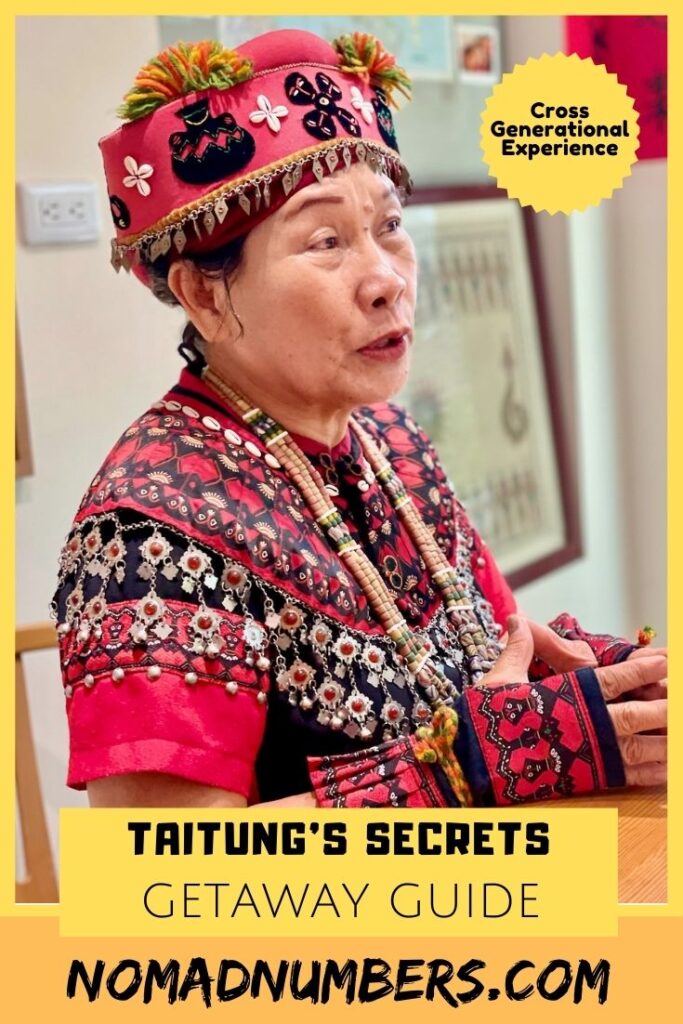



2 Comments
Luye International Hot Balloon Festival · September 21, 2024 at 8:36 am
[…] Discovering Taitung’s Secrets: A Cross-Generational Experience […]
Guide to Hiking Hehuanshan in Taiwan (5 Baiyue Peaks) · October 19, 2024 at 2:05 am
[…] Discovering Taitung’s Secrets: A Cross-Generational Experience […]